In the case of the 83-inch version, Samsung took a different route than with the smaller sizes and opted for the Tandem WOLED panel produced by LG Display. This move initially raised questions, but in practice, it turned out to be a home run. Here we have an exceptionally successful mix: absolutely reference black levels, outstanding brightness that allows enjoyment of HDR content even during the day, as well as overall picture quality that firmly places this television among the very best on the market. There are also advantages aimed at gamers – lightning-fast input lag, 165 Hz refresh rate, full support for VRR and G-Sync/Freesync, and four HDMI 2.1 ports that let you connect several consoles or PCs without any compromises. To the list of positives, we must also add the matte coating – rarely found in OLEDs, and in this case, exceptionally effective. Thanks to it, light reflections are largely eliminated, and the television remains readable and comfortable to view even in a sunlit living room. This feature becomes even more significant in such a large size, as it is hard to imagine an 83-inch screen on which instead of a movie we see a reflection of our own room. Of course, there were some compromises – the viewing angles on the WOLED panel are not as perfect as in QD-OLED versions. However, in return, we get better performance in challenging lighting conditions and a more stable image under strong light hitting the screen. In practice, it is hard to consider this a real downside, rather as a different distribution of emphasis compared to smaller variants. The S95F in the 83-inch version is an almost explosive mix: a gigantic OLED with a matte finish, excellent brightness, fantastic black levels, and a comprehensive suite of features for gamers. If someone dreams of a huge, matte screen that isn’t afraid of daylight, they will not find a better screen on the market at this moment.
- Matching (Score)
- Our verdict
- TV appearance
- Where to buy
- Contrast and black detail
- HDR effect quality
- Factory color reproduction
- Color reproduction after calibration
- Smoothness of tonal transitions
- Image scaling and smoothness of tonal transitions
- Blur and motion smoothness
- Console compatibility and gaming features
- Input lag
- Compatibility with PC
- Viewing angles
- TV efficiency during daytime
- Details about the matrix
- TV features
- Apps
- Playing files from USB
- Sound
SAMSUNG S95F (TANDEM OLED 83") vs Samsung Q7F
Direct compare
S95F / FAT / FAE
Available screen sizes: 83”
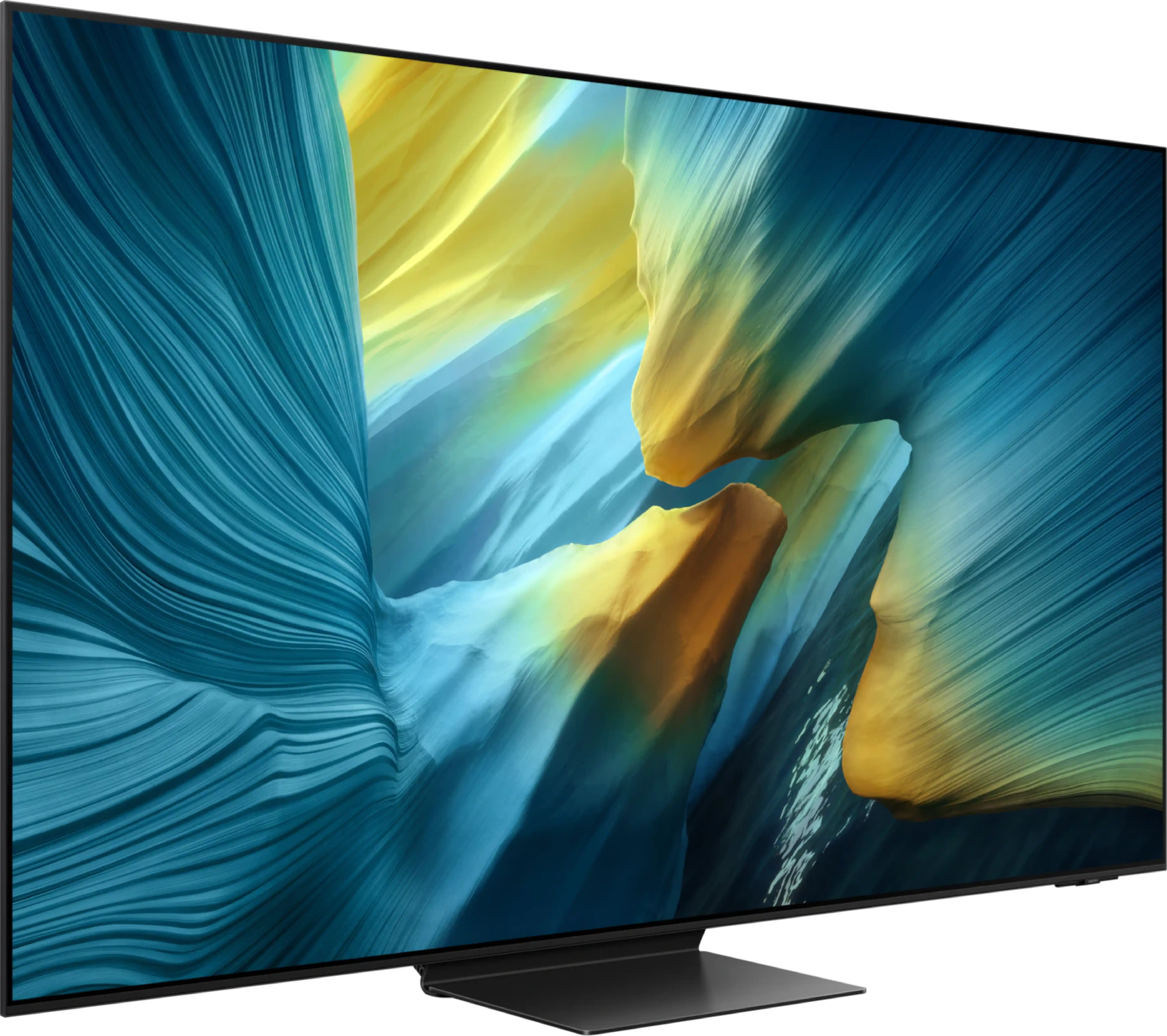

Panel type: WRGB OLED
Resolution: 3840x2160
System: Tizen
Model year: 2025
Complete the survey to find out the result

Panel type: LCD VA
Resolution: 3840x2160
System: Tizen
Model year: 2025
Complete the survey to find out the result

Overall rating
8.7
5.7
Movies and series in UHD quality
9.0
5.7
Classic TV, YouTube
9.0
5.6
Sports broadcasts (TV and apps)
8.7
5.3
Gaming on console
9.9
6.3
TV as a computer monitor
8.8
6.0
Watching in bright light
7.7
3.9
Utility functions
7.9
6.6
Apps
8.7
8.7
Sound quality
8.0
5.8
Complete the survey to find out what fits your preferences
Advantages
Perfect black and excellent contrast
High image brightness
Amazing image quality after calibration
Ultra-fast WOLED 165 Hz panel
Great choice for gamers – full support for HDMI 2.1, VRR, ALLM, and HGiG, with an input lag of just 5 ms
Very accurate colour reproduction after calibration
Best reflection suppression thanks to the matte screen finish and better performance of the panel in challenging lighting conditions compared to the version with a QD-OLED panel
Intuitive and speedy Tizen operating system with a rich set of features
Modern and elegant design
One Connect module for easy aesthetic cable management
Solid native contrast (VA Panel)
Vivid colours thanks to QLED filter
Low input lag (around 10ms)
Advanced and smooth Tizen operating system
Compact sleek design with Type-C charging
Disadvantages
No support for DTS:X (home cinema)
No USB recording from built-in tuners
Worse viewing angles (although still very good) than in the version with QD-OLED panel
Very low brightness (only 250 nits in HDR)
Lack of many features for gamers including VRR and HGiG – the manufacturer promised something, but in the end, those features are simply not available
Lack of many classic "television" features e.g. recording to USB or PIP
No Dolby Vision
Average quality of digital image processing
Our verdict
The Samsung Q7F is the manufacturer's cheapest model from the QLED line, and it must be admitted that a few advantages can easily be specified here. After calibration, the colours look really good, and the additional QLED filter makes the hues more saturated than in typical budget LCD televisions. Additionally, it features a VA panel that offers quite decent native contrast. It is certainly not at the level of top-tier models, but it performs adequately for everyday viewing. However, the biggest plus is the Tizen system, which is Samsung's flagship offering. It operates smoothly, is feature-rich, provides access to a multitude of applications and add-ons, and at the same time allows for straightforward connection of the television to the SmartThings ecosystem and control of other devices in the home. And basically, this is where the list of advantages ends, as the longer you use the Q7F, the more apparent it becomes that this is a product that is significantly underdeveloped. It's not just about the panel itself with its low brightness and mediocre picture quality in HDR films, but also about the lack of features that typically worked flawlessly in Samsung models. The manufacturer claims the presence of VRR and HGiG, but in practice, they offer no benefit, making it difficult to recommend this television even to casual gamers. It also does not perform particularly well for regular television as the digital image processing is at best average, and the tone transition enhancement feature, which usually worked excellently in Samsung models, hardly functions here. The Q7F is a piece of equipment that can only be recommended to those looking for a television with two phrases on the box: “QLED” and “good Smart TV”. Everyone else receives a rather bland product that falls significantly short of competing even with other more budget-friendly options. It’s a pity because usually, the word "QLED" in Samsung meant something more than just an ordinary television.
TV appearance
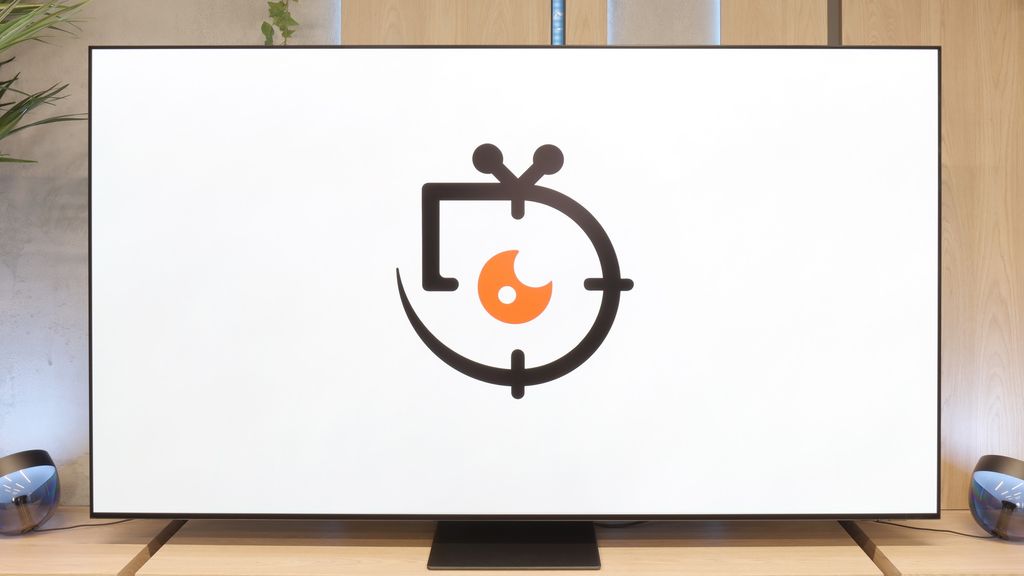
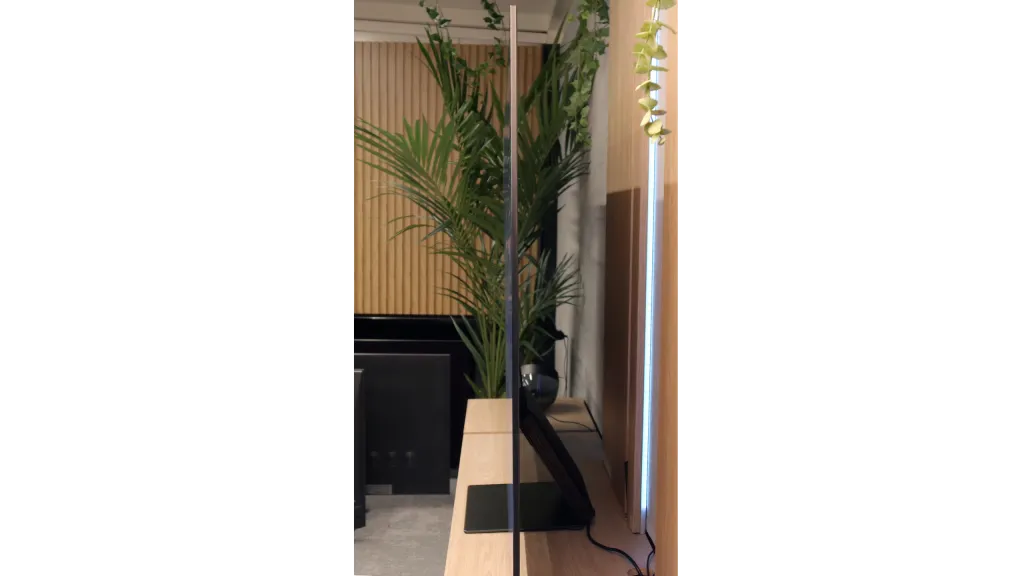
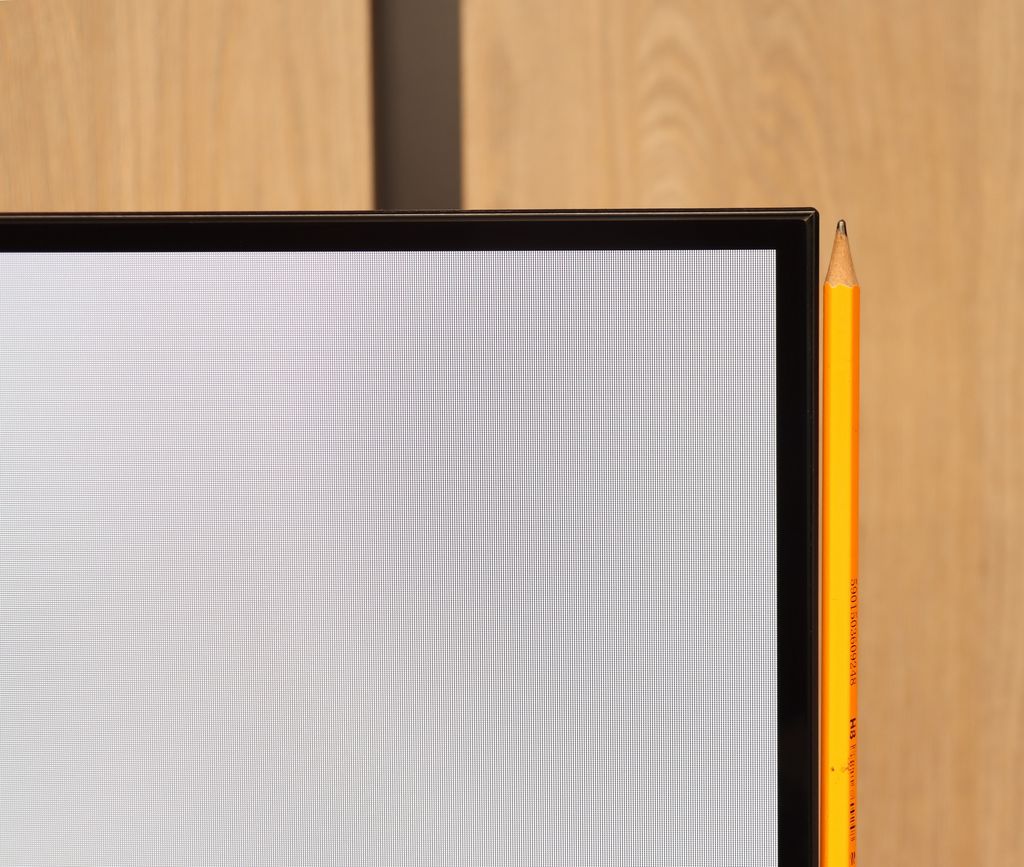
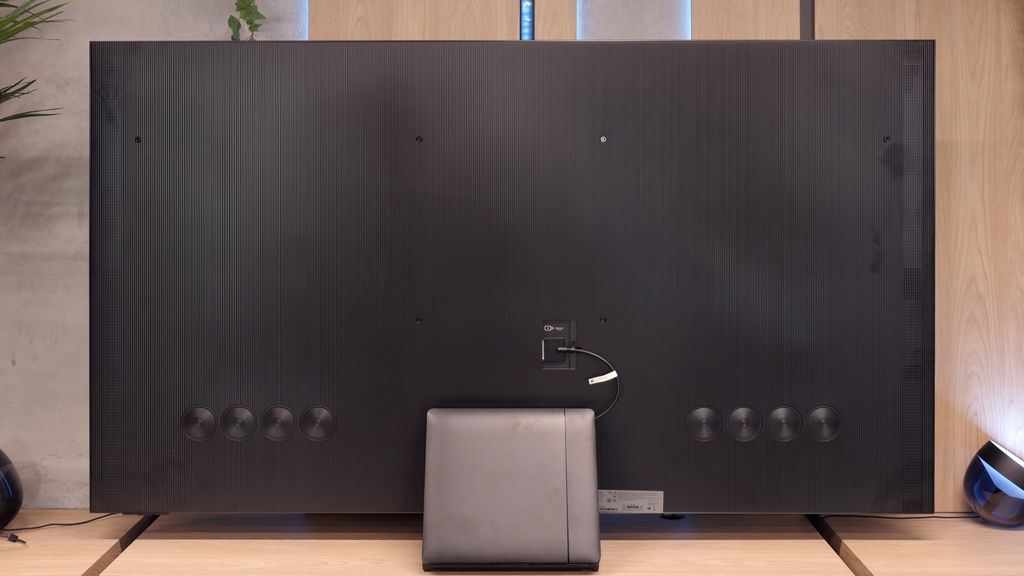
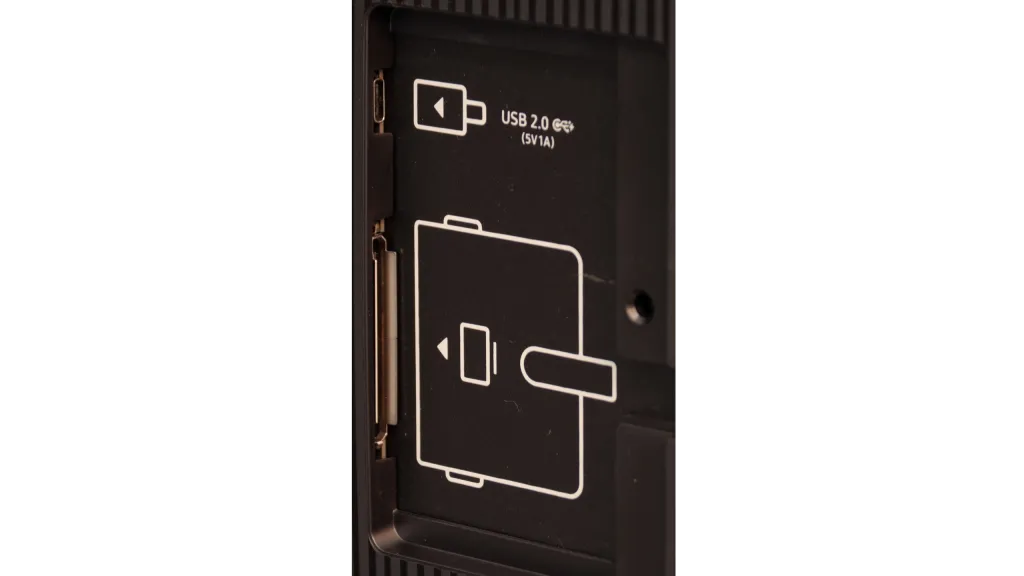




Contrast and black detail
10/10
4.7/10
Local dimming function: No
Contrast:

Result
∞:1

Result
∞:1

Result
∞:1

Result
∞:1

Result
∞:1

Result
2,850:1

Result
2,750:1

Result
3,300:1

Result
3,050:1

Result
2,750:1
Halo effect and black detail visibility:
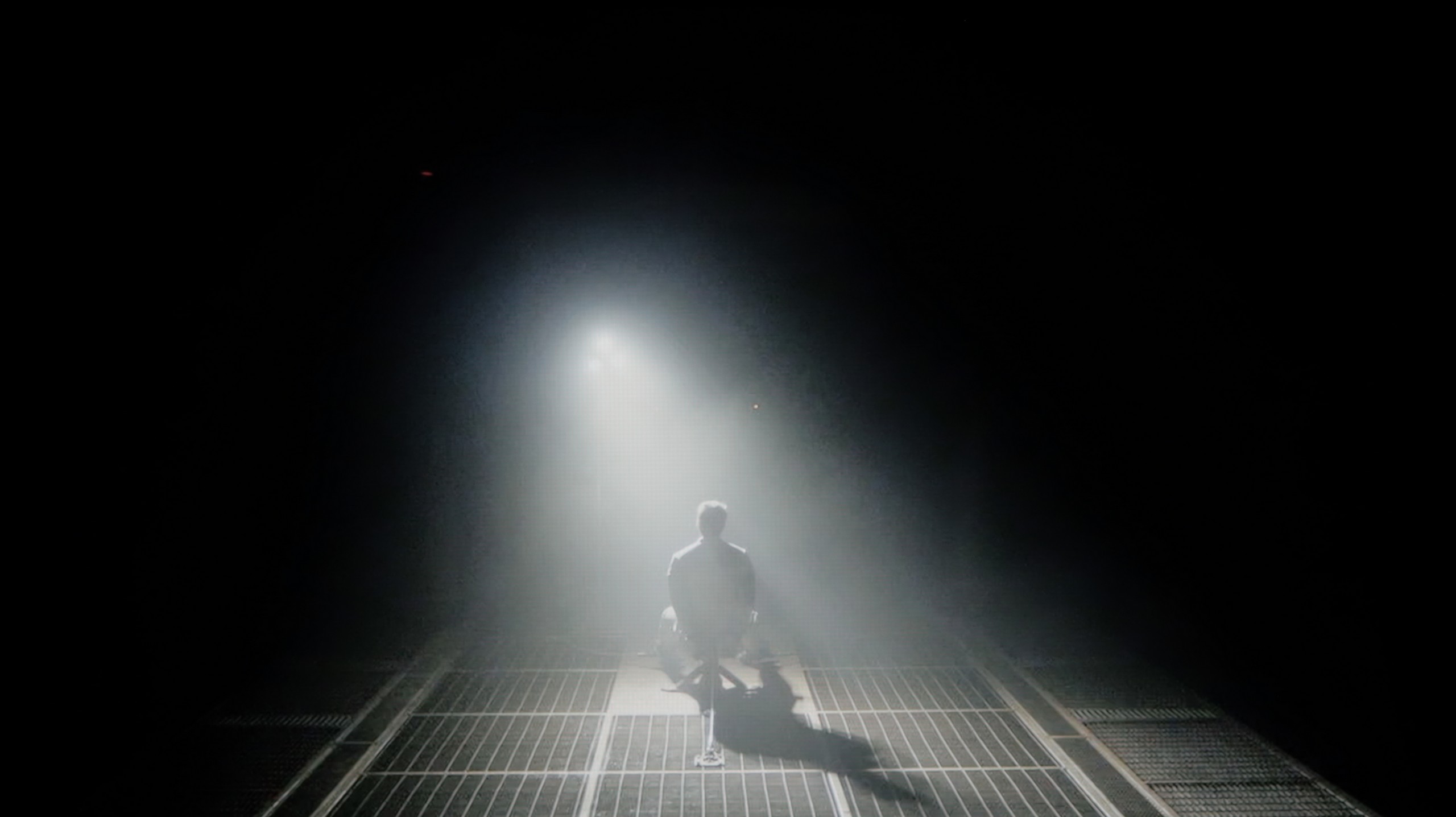

The 83-inch version, equipped with a Tandem OLED panel, also offers a picture that makes a stunning impression. Despite the different technology, the final effect remains at an absolutely top level. The black is deep and uniform, without any transparency or imperfections, and the contrast is truly breathtaking. In dark scenes, every detail remains visible, and the separation of lights is perfect – nothing blends together, and the image looks exactly as it should on a reference-class television. This is proof that regardless of the panel used, Samsung has set the bar very high in this series.
The Samsung Q7F in the tested size of 55 inches has a VA panel, which immediately translates to decent native contrast. Values around 3000:1 may not be record-breaking, as we know that panels with more than double the contrast are currently being produced, but it still performs much better than IPS or ADS panels, where black quickly fades into shades of grey or navy blue. Unfortunately, we do not find typical local dimming zones here, but the manufacturer has included something akin to global dimming – that is, dimming the entire screen in relation to the content. The effect? In most scenes, black appears rather solid, although during night viewing sessions, we will still see that it more closely resembles dark navy or grey than true pitch black. Overall, it's okay, but without fireworks – it's not spectacular, but it's also not a disaster.
HDR effect quality
8.6/10
3.7/10
Luminance measurements in HDR:

Result
2074 nit

Result
2107 nit

Result
2330 nit

Result
2165 nit

Result
1083 nit

Result
215 nit

Result
225 nit

Result
267 nit

Result
113 nit

Result
250 nit
Scene from the movie “Pan” (about 2800 nits)


Scene from the movie “Billy Lynn” (about 1100 nits)


Static HDR10


Dynamic: HDR10+
Dynamic: HDR10+


HDR luminance chart:
Samsung Q7F
HDR luminance
SAMSUNG S95F (TANDEM OLED 83")
HDR luminance
Luminance of RGB colors
The Samsung S95F in the 83-inch variant with a Tandem OLED panel also manages to enchant with HDR effects. In test film scenes, such as "Life of Pi" or "Sicario 2", where smaller light points dominate – stars in the night sky, the glow of the moon or headlights – the television effortlessly achieves brightness values exceeding 2000 nits. This is a result that not long ago seemed unattainable for OLEDs and positions this model alongside the best Mini-LED constructions.
The limitations of organic panels only reveal themselves in full-screen scenes filled entirely with white. In the case of this model, for instance in the final scene from the film The Meg, brightness drops to around 1000 nits – a bit lower than in the smaller QD-OLED variants, where the result hovered around 1400 nits. Nevertheless, we are still talking about a remarkable result, unprecedented in OLED televisions of this size. The colour reproduction is equally impressive. The new Tandem OLED panel virtually catches up with QD-OLED televisions, offering excellent coverage of a wide colour gamut. The results are slightly weaker than with QD-OLED, but in practice, they still provide an image whose intensity and naturalness of colours are hard to compare with any other television.
Unfortunately, the Samsung Q7F is not one of the brighter televisions, and this has a direct impact on the quality of HDR films. The peak brightness of the panel is just around 250 nits, which is definitely too low to speak of true cinematic experiences. In practice, the image in HDR content does not differ significantly from classic SDR, making it difficult to talk about any "wow effect" that usually accompanies us when watching such films. During tests of film scenes, the image simply looked dark, and the brightness almost always hovered around the aforementioned 250 nits. The worst performances were with shots that included small, intensely shining elements – the global dimming technique used reacted very aggressively in these cases, dimming the entire screen to maintain the effect of black. However, it is worth noting the presence of the QLED coating that expands the colour palette. For a budget QLED model, the Q7F performs quite decently here: the coverage of the DCI-P3 palette is about 93%, and BT.2020 reaches 70%. This means that, despite the low brightness, the colours can still look quite vivid and attractive.
Factory color reproduction
6/10
5/10


Factory Mode
After calibration


Factory Mode
After calibration
The best picture mode straight out of the box is undoubtedly Filmmaker Mode. This is a mode that has been available in Samsung televisions for several years and is intended to reproduce the image as faithfully as possible to the creators' vision. In SDR material, it performs reasonably well, although not without faults. The image is slightly subdued, and the white balance tends to shift towards red and blue, resulting in a slight pinkish tint on the screen. The average colour errors hover around a value of ΔE 3–4, which is at the limit of what most people can discern with the naked eye.
Much more pronounced are the limitations when it comes to HDR content. Here, a slight excess of blue in the white balance is not such a big problem – the real obstacle is the way the television manages brightness. In many scenes, the image appeared as if it had been overexposed, and details in the blacks could completely disappear. The final effect did not reflect what the hardware of this class is capable of and led to significant colour errors. It's hard to understand why such a factory characteristic was chosen, as the HDR reception in this version was definitely not what it should have been.
The factory colour accuracy of the Samsung Q7F is certainly not one of its strong points. In Filmmaker mode, which theoretically should be the closest to neutral, the issue with white balance immediately stands out. There is too much red on the screen, while blue is lacking. The consequences of this are very easy to notice – white, instead of being neutral, takes on warm, almost slightly orange tones. In the long run, this makes the entire image look somewhat unnatural, and bright areas of the scene may seem unrealistic. The problems become even more evident in HDR content. The graphs show that the television has significant errors in the Color Checker palette, which translates to visible inaccuracies in the actual image. Practically, this means that the colours are not presented as they should be. The Q7F also heavily manipulates brightness; darker elements are overly boosted, losing their cinematic quality, while bright parts may appear dimmed. As a result, the image seems flattened, and contrast, instead of helping to bring out details, only highlights its own limitations. This is particularly frustrating in HDR material, where every detail matters. In scenes where there should be a subtle play of light and shadow, the Q7F either oversteps by brightening too much or conversely – suppresses elements that should draw the eye. This causes the image to lose its depth, and instead of cinematic realism, we have a rather simplified effect.
Color reproduction after calibration
9.4/10
7.6/10
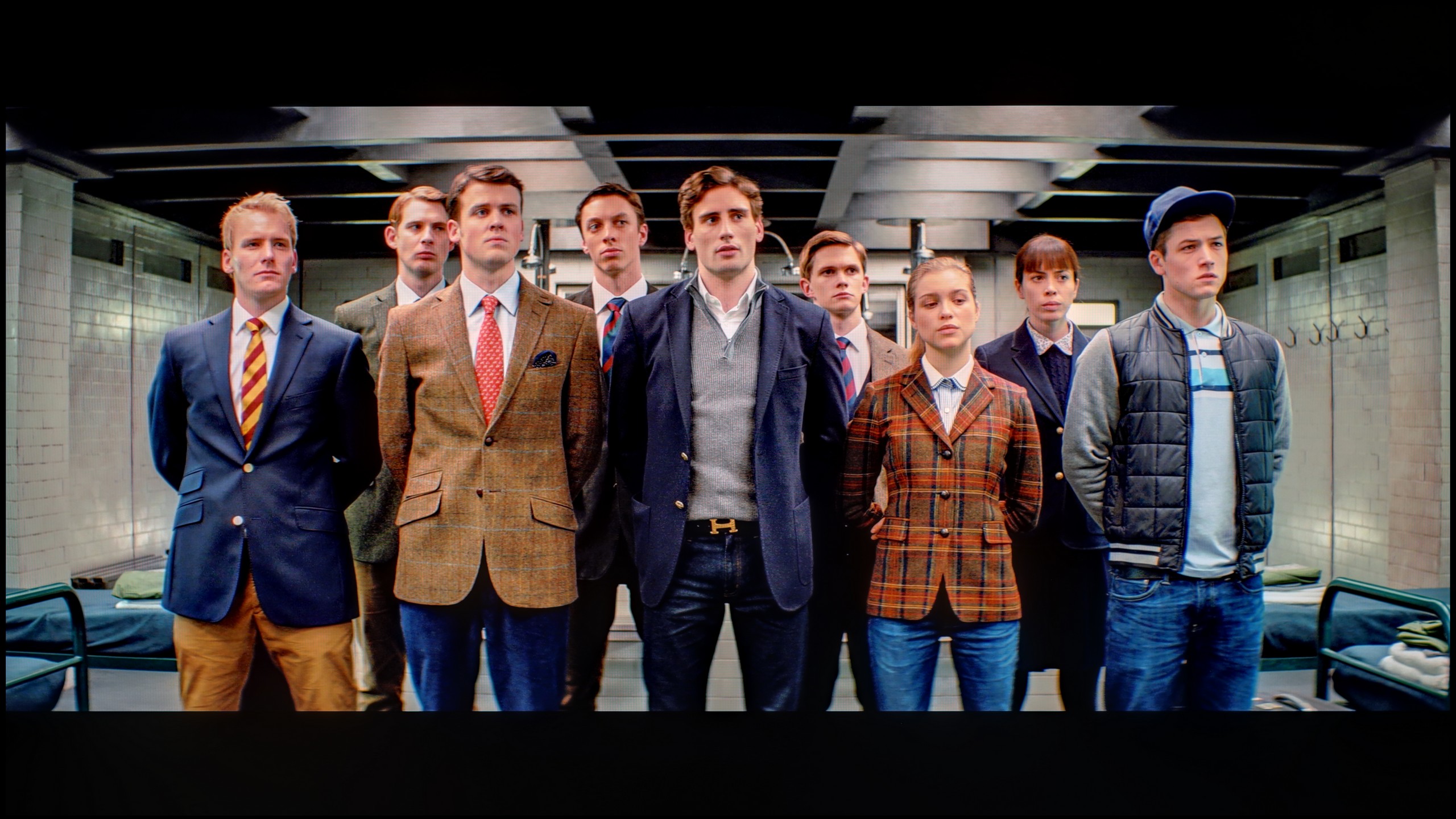



After calibration, the S95F shows what it is truly capable of. The white balance has been corrected and minor inaccuracies adjusted, resulting in an almost exemplary image for SDR content. The colour differences have dropped below the level that the human eye can perceive – looking at the screen gives a sense of complete naturalness and colour coherence.
In HDR, the improvement is equally noticeable. The TV performs much better with brightness, eliminating the issue of "blowing out" the entire frame. Bright scenes are more controlled, and blacks retain more detail, although there can still be a slight brightening of the image as a whole. However, this does not change the fact that after calibration, the S95F delivers an image that can comfortably be called one of the best on the market – regardless of whether we are watching movies in SDR or spectacular productions in HDR.
After professional calibration, we managed to bring the Q7F into order – at least in terms of SDR content. The picture in this mode looks really good: the white balance has been set correctly, the colours appear natural, and errors in the colour palette have dropped to levels that are practically invisible to the eye. Gamma behaves exemplary, and the only minor drawback is a slight lightening of smaller elements, which results from the lack of local dimming. For everyday watching of television or films in standard quality, the Q7F performs surprisingly well.
It was significantly harder to tame HDR content. Despite adjusting the white balance, the television still heavily manipulates brightness, causing scenes to sometimes look unnatural – what should be subtly darker can be overly brightened, and bright areas of the picture can occasionally appear dimmed. The end result is better than in factory settings, but it is evident that the structural limitations of the Q7F do not allow for the full potential of HDR materials to be fully realised.
Smoothness of tonal transitions
8.6/10
9/10




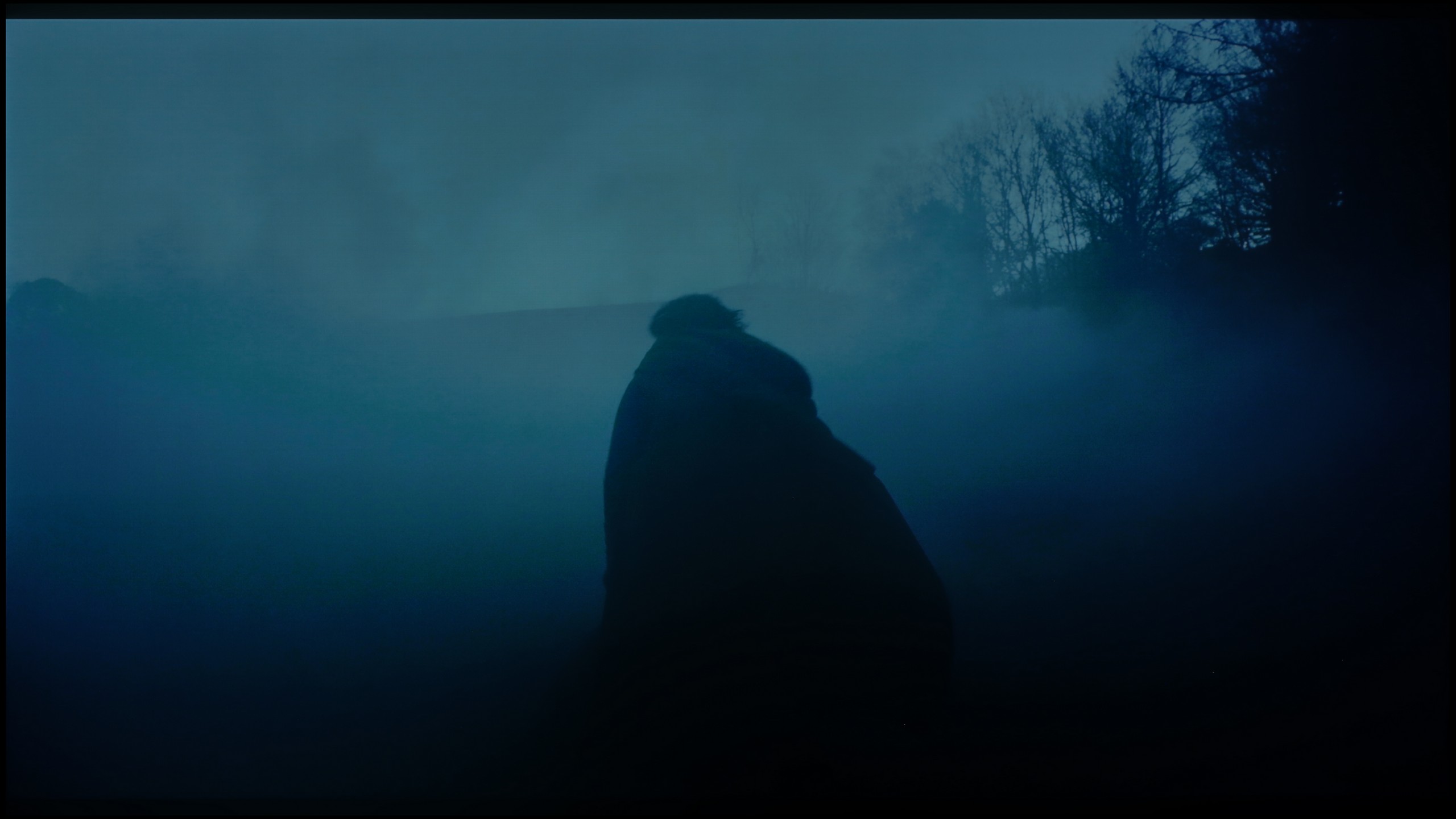







The S95F version with the Tandem OLED panel also handles the fluidity of tonal transitions very well. Although WOLED panels have not typically been the strongest in this category, it is difficult to spot any serious issues here. The gradation of colours is smooth and natural, and the only minor imperfections may appear with brighter colours. However, they are not significant enough to spoil the overall impression of the picture – the whole thing presents itself at a really high level.
The fluidity of tonal transitions in the Q7F is really quite good. The gradients are smooth, without strong stair-stepping or artificial divisions that can be quite noticeable in cheaper televisions. Even in more challenging scenes, such as the one from The Revenant or the red shot with the actor swimming in water, the image maintained quality and simply looked good. If someone were to look very closely, they might notice slight imperfections in extremely demanding moments, but they are subtle enough that most people won't even notice them. For this price range, the Q7F performs surprisingly solidly in terms of gradation, and it's hard to find anything significant to criticise.
Image scaling and smoothness of tonal transitions
7.5/10
4.5/10
Smooth transition function
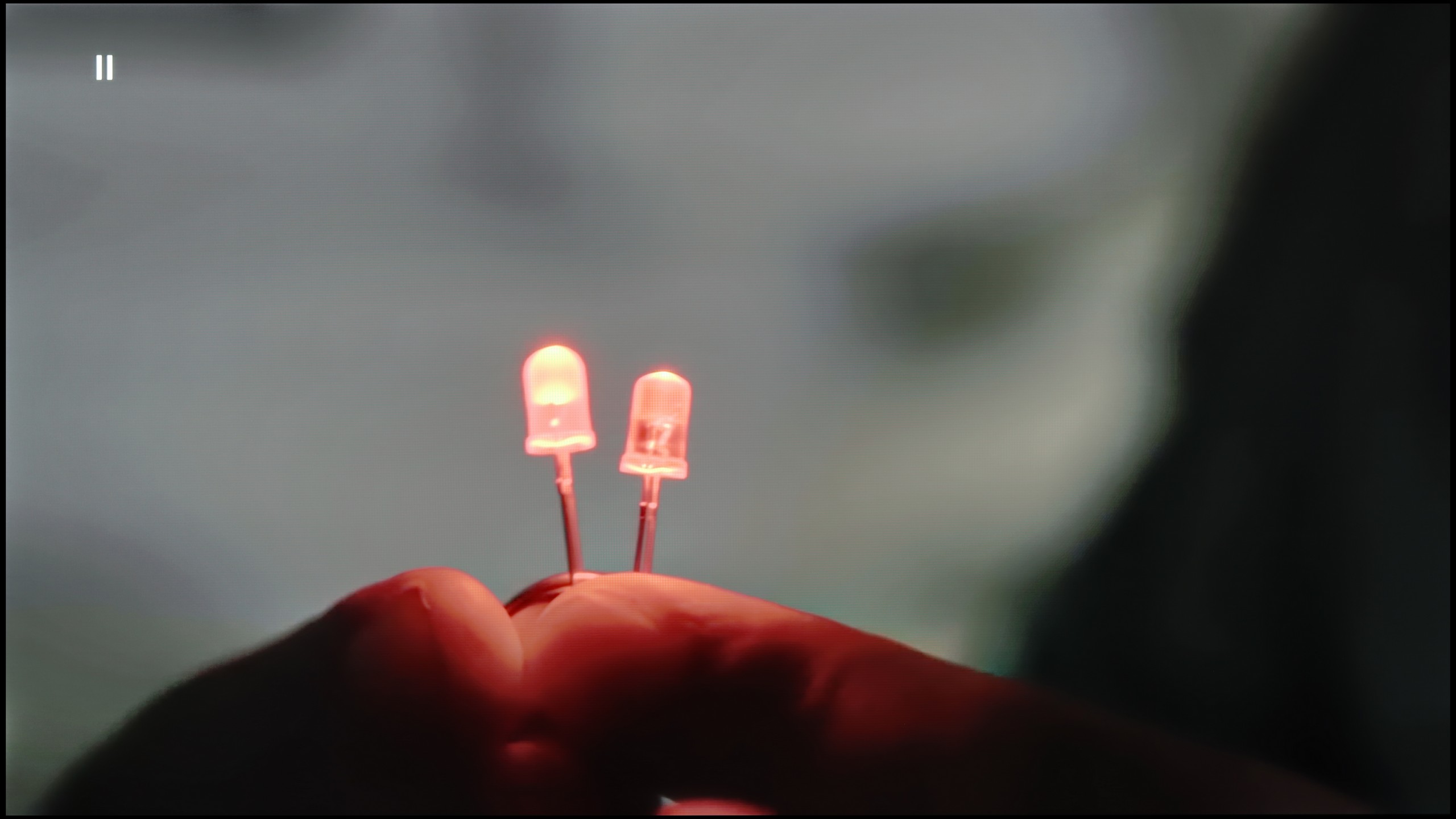

Image without overscan on the SD signal


In the Samsung S95F model, there is a noise reduction feature aimed at improving the smoothness of tonal transitions. Its operation can hardly be called ineffective – on the contrary, it can overly interfere with the image. Older films or materials of poorer quality, such as those from YouTube, acquire a soft, smoothed character thanks to it, reminiscent of a painting effect. The problem is that along with the noise, the natural film grain disappears, stripping the image of its cinematic character. Fortunately, the feature does not blur significant details, so its use is more a matter of taste. If someone prefers a slightly polished and smooth image, it is worth enabling, but in our opinion, the most sensible setting is “Standard”.
A better impression is left by the upscaling. The S95F efficiently enhances the quality of lower resolution content – even 576p video looks quite good, although minor artifacts in the form of blockiness can be noticed. Overall, the effect is very solid, although when compared to competitors – such as the Sony Bravia 8 (II) or LG G5 – it is noticeable that those models can extract a bit more from the image. However, it is worth remembering one inconvenience: with older films and photos, there is an overscan issue that causes a slight cutting off of the left edge of the image.
Upscaling and digital image processing on the Q7F is a bit of a sine wave. On one hand, we have really nice upscaling – weaker sources look better than one might expect. The image becomes clearer, sharper, and even older films or terrestrial television perform adequately. Samsung has been strong in this area for years, and the Q7F confirms that. On the other hand… there are some issues. The television has a problem with overscan – part of the image is simply cut off, and it doesn't look very elegant. Additionally, we were let down by a feature called "noise reduction", which should improve the smoothness of tonal transitions in weaker materials. In other Samsungs, it works relatively well, but here it makes practically no difference – the banding in gradients is still there. It's a bit of a shame, as one could have expected more from a model that is aimed at users looking for a display for SDR content.
Blur and motion smoothness
9/10
5.5/10
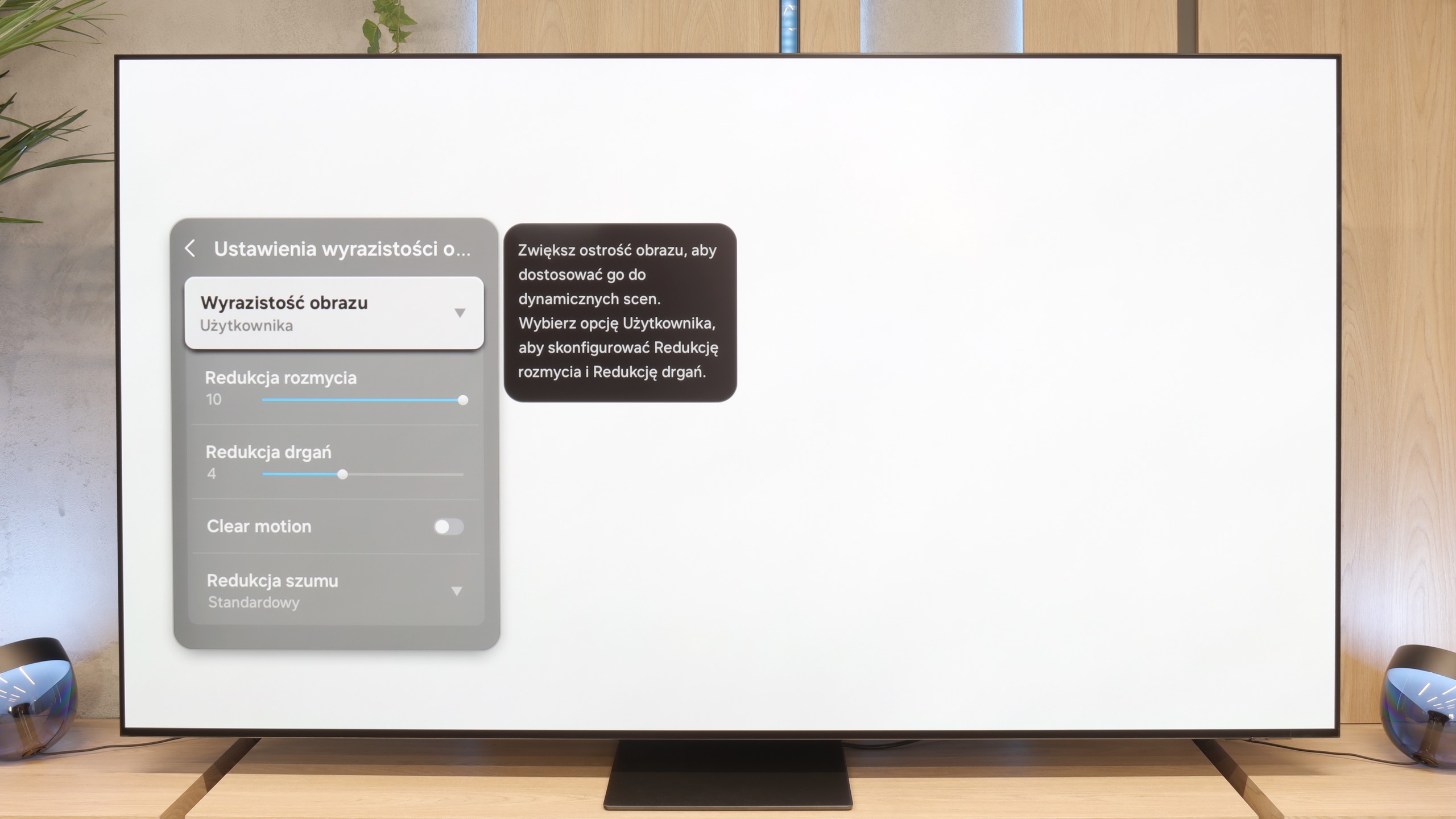

Blur (native resolution, maximum refresh rate):

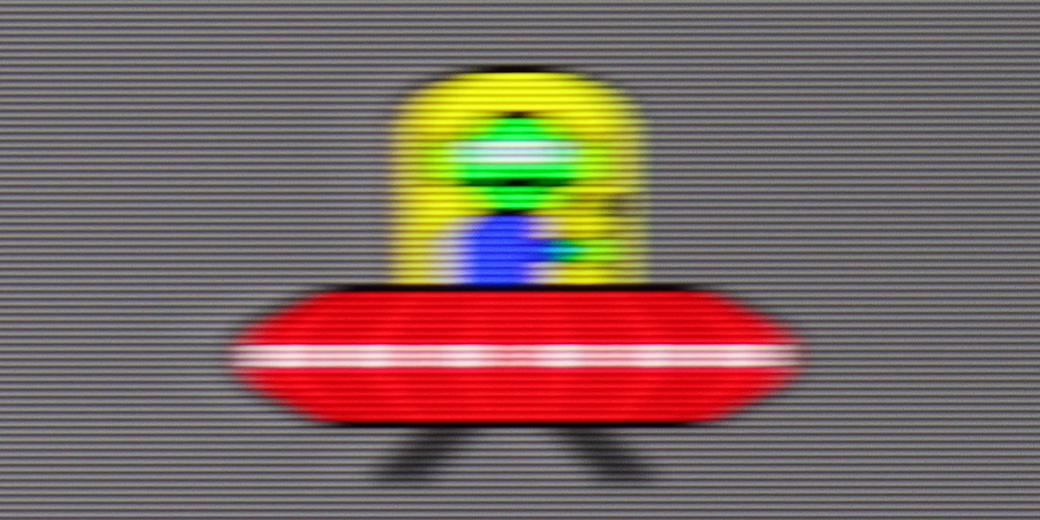




Blur (BFI function enabled):
Image flickers in this mode



Image flickers in this mode



Smużenie (4K@165Hz):
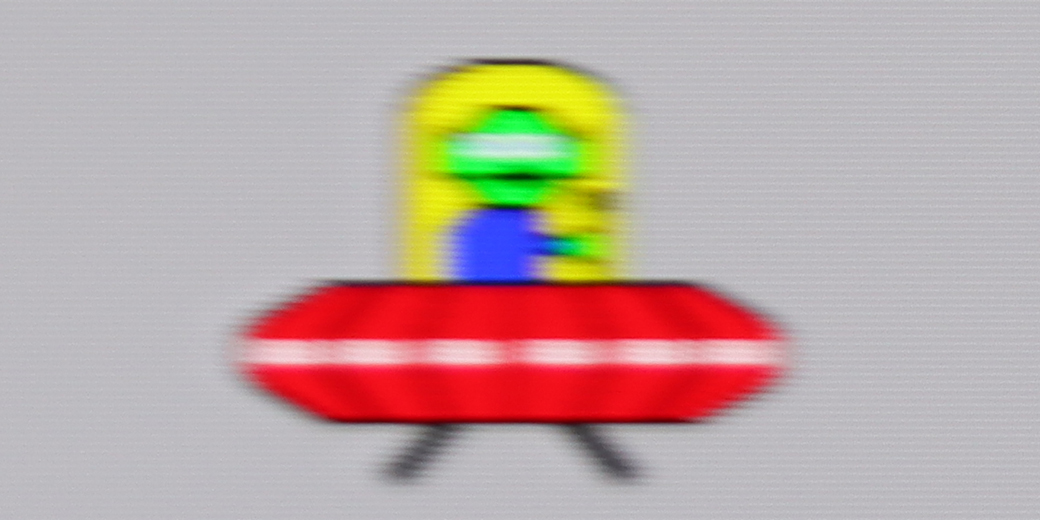
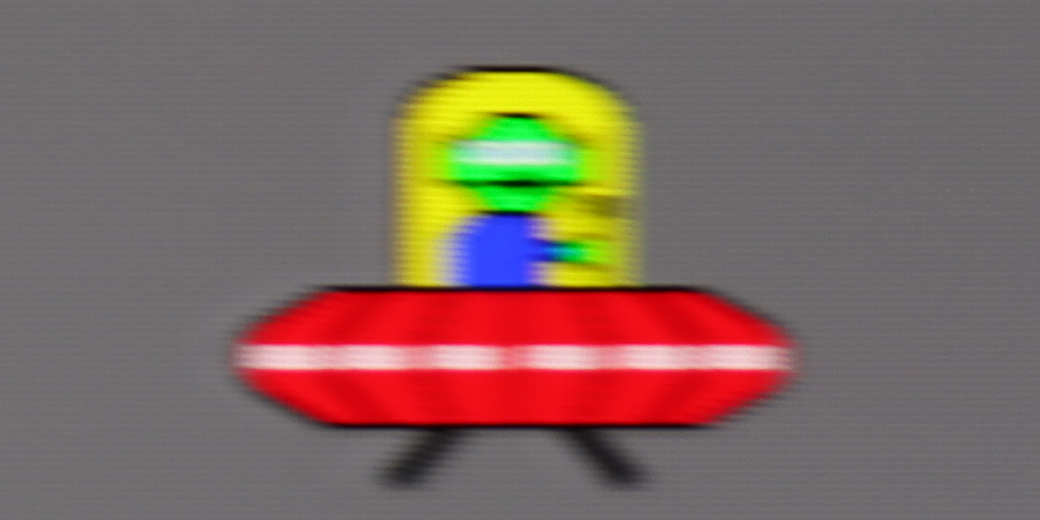
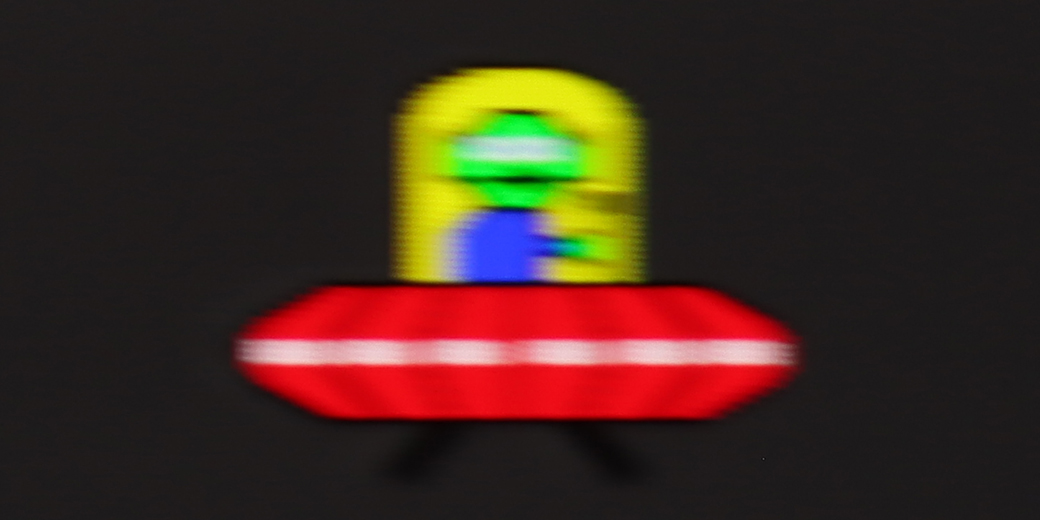
Smużenie ():
In the case of the 83-inch S95F with a Tandem OLED panel, the fluidity of motion also makes a huge impression. The panel, with a native resolution of 4K, offers a refresh rate of 165 Hz, and this combined with organic technology makes games and sports look superb. Additionally, the manufacturer has added a film smoother and a motion blur reduction system, allowing each viewer to adjust the image to their own preferences – whether it's a more "frame-rate" cinematic effect or a smooth, almost theatrical spectacle.
Ghosting and motion smoothness in the Q7F are probably the most budget-friendly elements of this television. The 60 Hz panel makes itself known, with noticeable ghosting, especially in dynamic scenes, and it's rather difficult to regard this model as equipment designed for watching sports or playing fast-paced games. In tests with the little green man, a long trail was left behind, similarly to how a ball in a football match would leave streaks.
On the plus side, the presence of motion smoothing must be acknowledged. In films, it actually makes a difference – especially since most material is recorded at 24 frames per second. Here we can decide whether we prefer a more "cinematic" image, with slight judder typical of cinema, or a smoother, more "television" approach. This part works quite well and helps to improve the viewing experience for series and films.
Console compatibility and gaming features
9.6/10
3.3/10
- ALLM
- VRR
- VRR range48 - 165Hz
- Dolby Vision Game Mode
- Correct implementation of HGIG
- 1080p@120Hz
- 1440p@120Hz
- 4K@120Hz
- Game bar
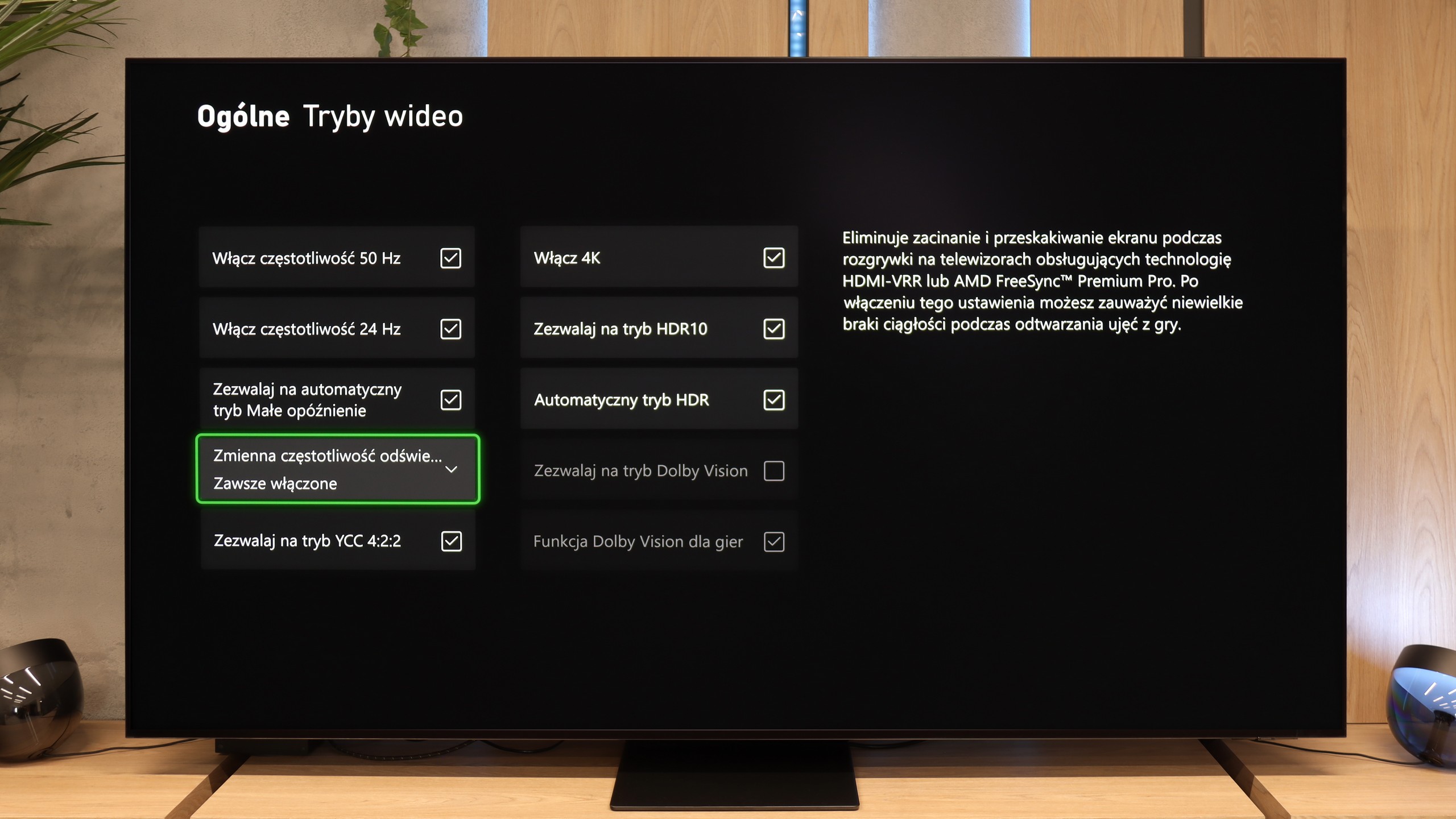

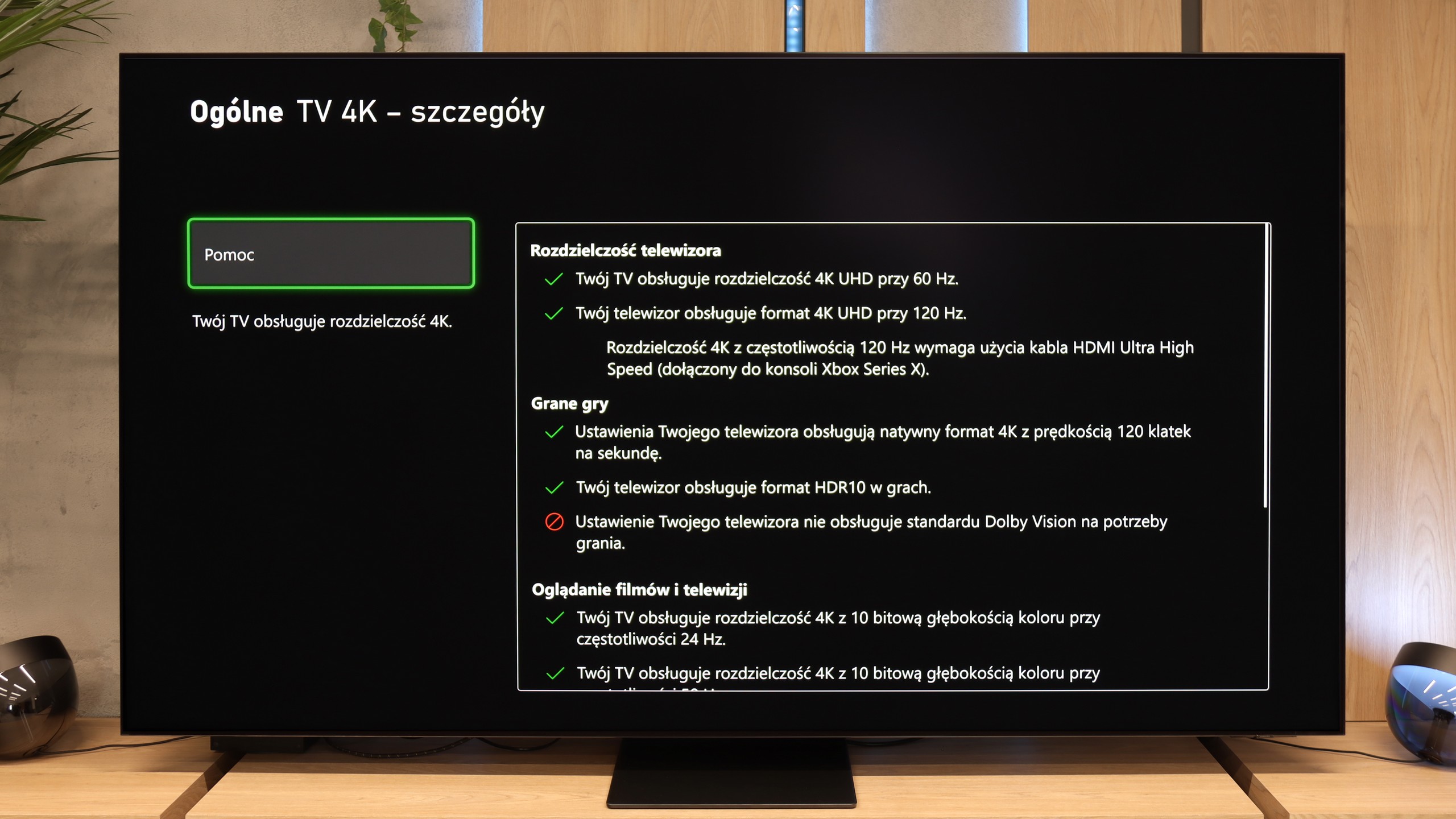

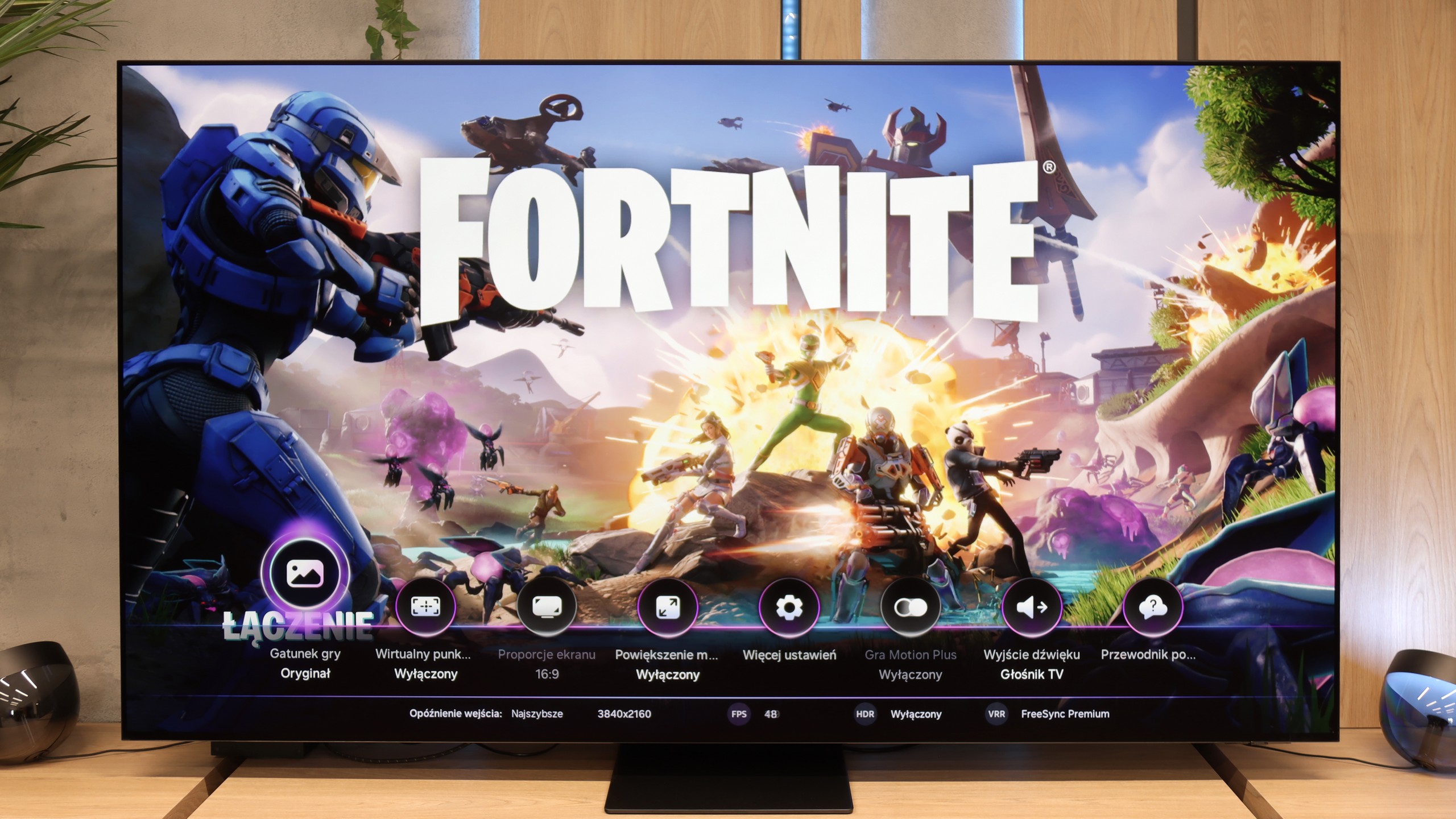

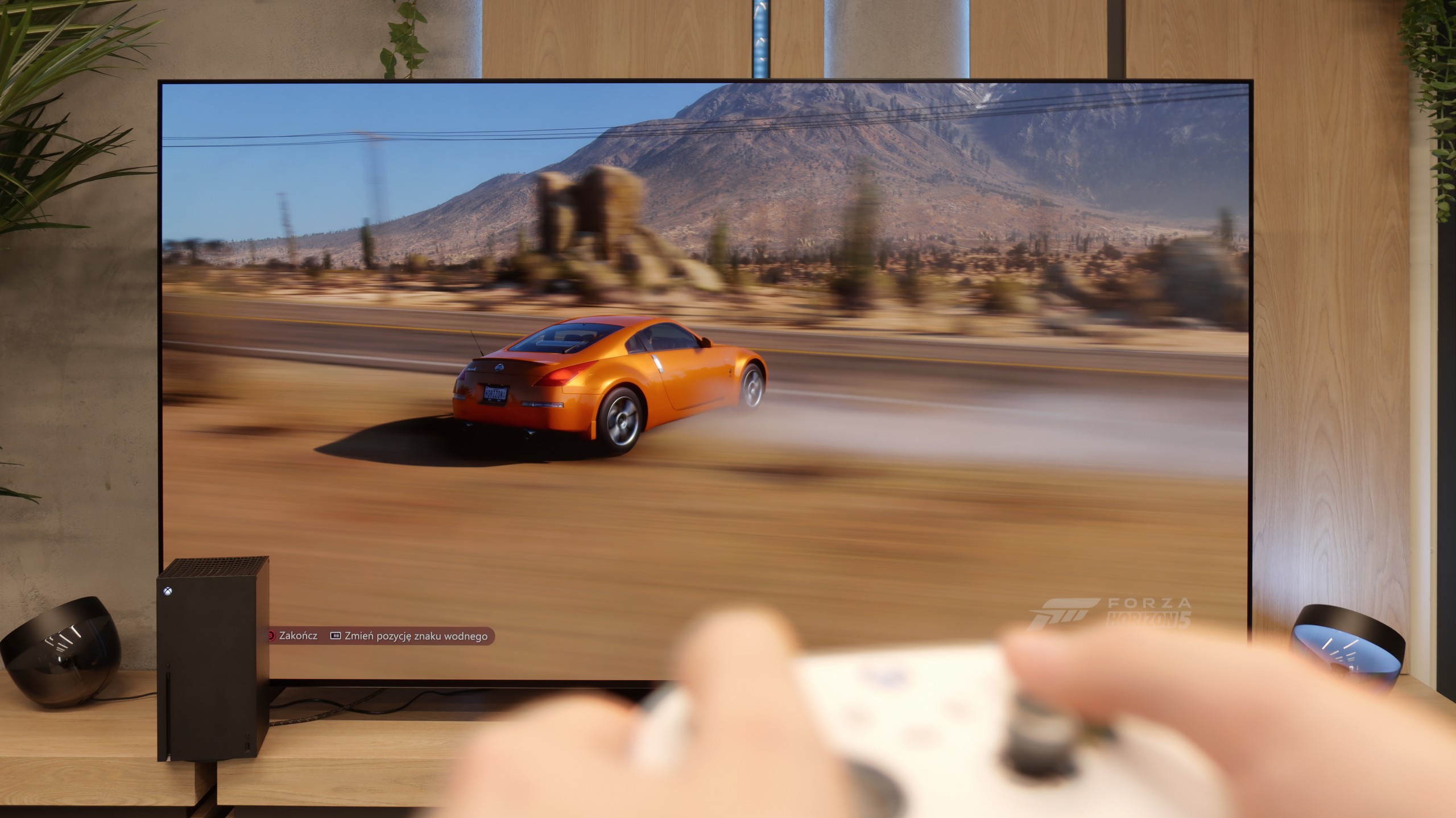

Low smearing and phenomenal motion fluidity, which are the hallmarks of OLED displays, are just the warm-up. The Samsung S95F has been designed with gamers in mind – and this is evident at every turn. Four HDMI 2.1 ports with a bandwidth of 40 Gb/s may sound like a compromise on paper, but in practice, neither consoles nor PCs will experience the slightest limitation here. On board, there is a full set of gaming features: Variable Refresh Rate (VRR), Auto Low Latency Mode (ALLM), as well as a flawlessly implemented HGiG standard that allows you to enjoy HDR exactly as the creators intended. All of this is complemented by Game Bar – an intuitive command centre where you can check and adjust the most important settings in seconds.
Particular attention should also be paid to Game Motion Plus, Samsung's proprietary motion smoothing technology. It can add extra fluidity to animations, which can be a lifesaver in games running at 60 frames per second, where stability doesn't always hold up. Indeed, support for Dolby Vision in games is lacking, but it’s hard to consider this a serious flaw – the manufacturer compensates for this gap with other solutions. The S95F is one of the absolute favourites for the title of the best gaming television on today's market.
Features for gamers in the Samsung Q7F is a topic that evokes quite a lot of mixed feelings. On the one hand – no sensible person expected miracles here, as it is after all a 60 Hz television and it was clear from the start that it would not be a device for squeezing the maximum out of a console or PC. On the other hand, since the manufacturer promised specific solutions in promotional materials, it is natural that we wanted to see them in practice. At the outset, it’s quite decent. The automatic game mode (ALLM) works, so there’s no need to manually fiddle with the settings; the console automatically switches the television to low-latency mode. Additionally, we have the Game Bar, which looks impressive and allows you to check a few basic parameters without leaving the game. And this is where the good news ends.
The biggest problem with the Q7F is VRR, or rather its absence. Yes, an appropriate icon appears in the menu, and you can even see it in the Game Bar, but throughout the entire test, the feature remained inactive and could not be enabled in any way. The situation with HGiG is even more painful; this option was indeed available at the beginning, but after a software update, it completely vanished, which is simply unprofessional. Therefore, the Q7F is only suited for the absolute basics. Of course, you can turn on the console, play some calmer titles, and enjoy low input lag, but if someone is counting on more advanced features that the manufacturer promised, they will be disappointed. This is not a television to buy with gaming in mind, and it's better to be aware of that before making a purchase.
Input lag
10/10
10/10
SDR
HDR
Dolby Vision
The input lag on the Samsung S95F is absolutely top-notch – just 5 ms with 120 Hz content is stunning. The response to our actions on the controller is almost instantaneous, providing a sense of complete control over the gameplay. Of course, with 60 Hz content, the lag is doubled, but even 10 ms is hard to consider a reason for complaints – it’s still a result that will satisfy both demanding gamers and e-sports perfectionists.
Input lag on the Samsung Q7F is really good for a television with a 60 Hz panel. Measurements showed values below 12 ms, which means that for regular gaming on a console, this model is more than sufficient. Of course, it is not on the level of high-end 120 Hz screens, which can go as low as 6–7 ms, but in everyday practice, it is hard to talk about noticeable delay. In this respect, the Q7F does not fall behind its competitors in its segment and can easily be considered a safe choice for casual or sports gaming. At least in this regard.
Compatibility with PC
8.8/10
6/10
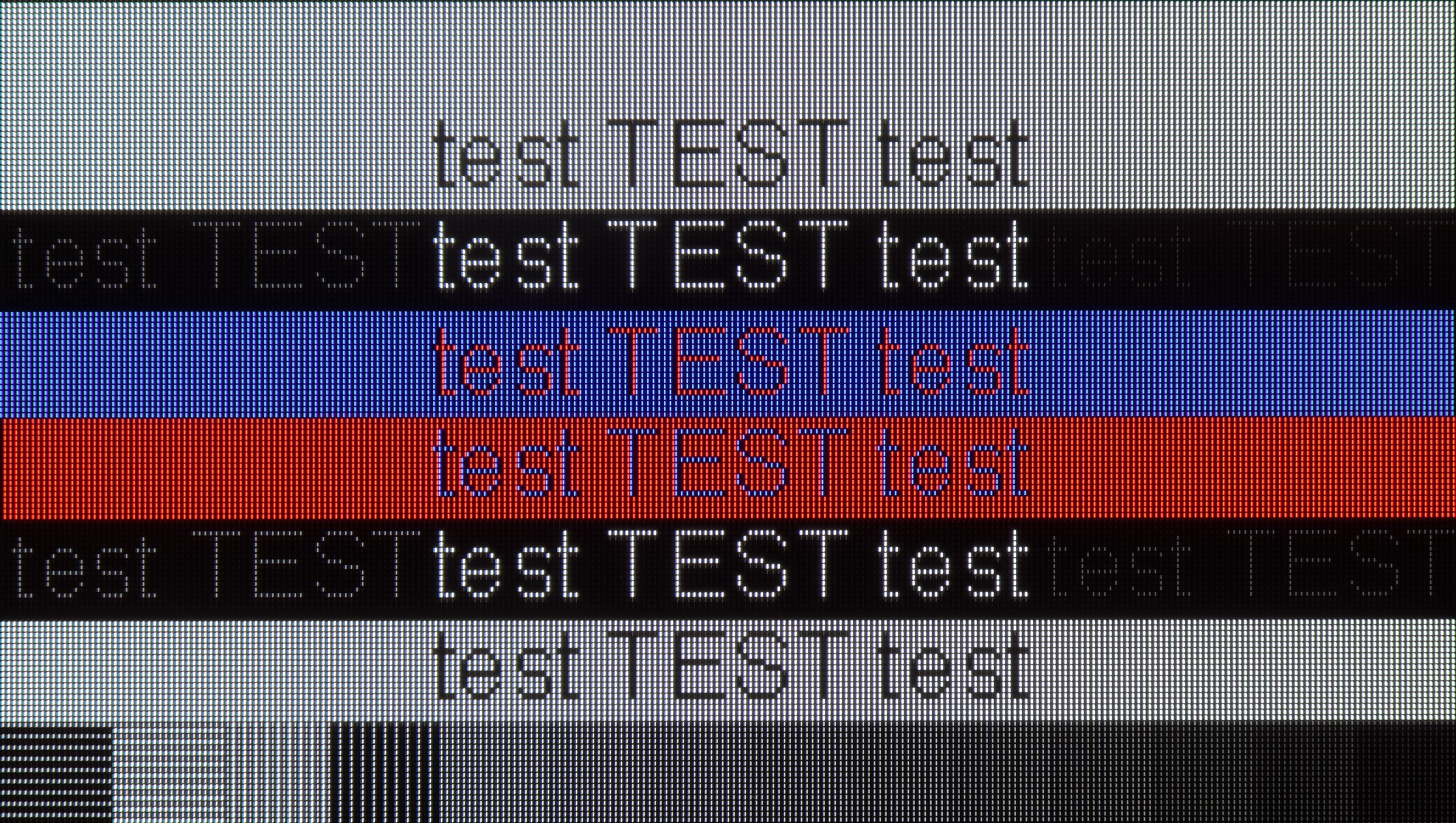

In the version with the WOLED panel, the Samsung S95F also shows its claws – PC gamers have a complete gaming package at their disposal with low input lag, support for G-Sync and FreeSync, and fast refresh rates. This is hardware that can easily replace a monitor even in dynamic titles. When working with text, the differences compared to QD-OLED are subtle yet noticeable – the BWGR subpixel arrangement may give the impression of a slight softening of the edges of letters, as if the text has a delicate shadow. This is not a flaw that ruins the comfort of using a PC, rather a feature arising from the panel's construction.
Collaboration with a PC on the Q7F is decent, although it is not a television that will satisfy the most demanding users. Fonts are displayed clearly and sharply, so it is perfectly fine to work on it – especially for daily office tasks or browsing the internet. With thin letters, one can notice slight shadowing, but it is not something that interferes with normal use. In a smaller size, the Q7F can indeed work as a computer screen, although one must remember its limitations. The lack of variable refresh rate means we cannot use G-Sync or FreeSync, and 60 Hz practically closes the door to more demanding PC gaming. For work and light usage, it will be okay, but for serious gaming, it is definitely better to look for something higher in Samsung's offering.
Viewing angles
7.6/10
3.5/10
In the variant with the WOLED matrix, the viewing angles are good and absolutely adequate for everyday watching. The fact is that the QD-OLED panel performs better in this respect, and with a strong angle, you can notice a slight shift in colours; however, this is not something that disrupts a normal viewing experience. Sitting on the sofa – whether in the middle or slightly to the side – the picture still looks very good, and most viewers will be fully satisfied.
The viewing angles on the Q7F are simply poor – typical for a VA panel. Just sitting slightly to the side immediately shows that the image loses quality. Colours fade, contrast clearly drops, and blacks start to resemble grey more than anything deep. This is a television that is definitely best viewed head-on, and any wider viewing angle comes with compromises.
TV efficiency during daytime
7.7/10
3.9/10
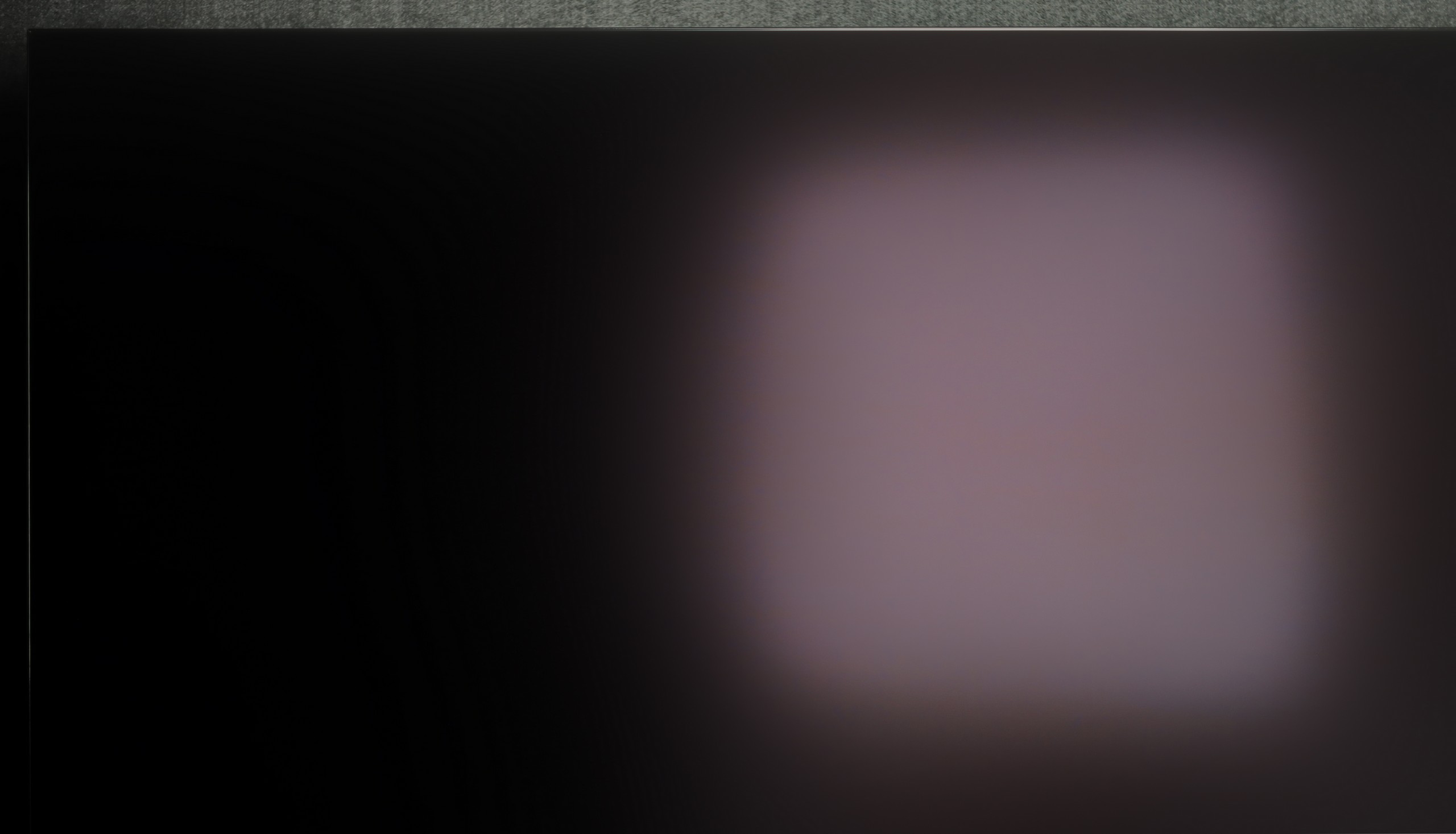

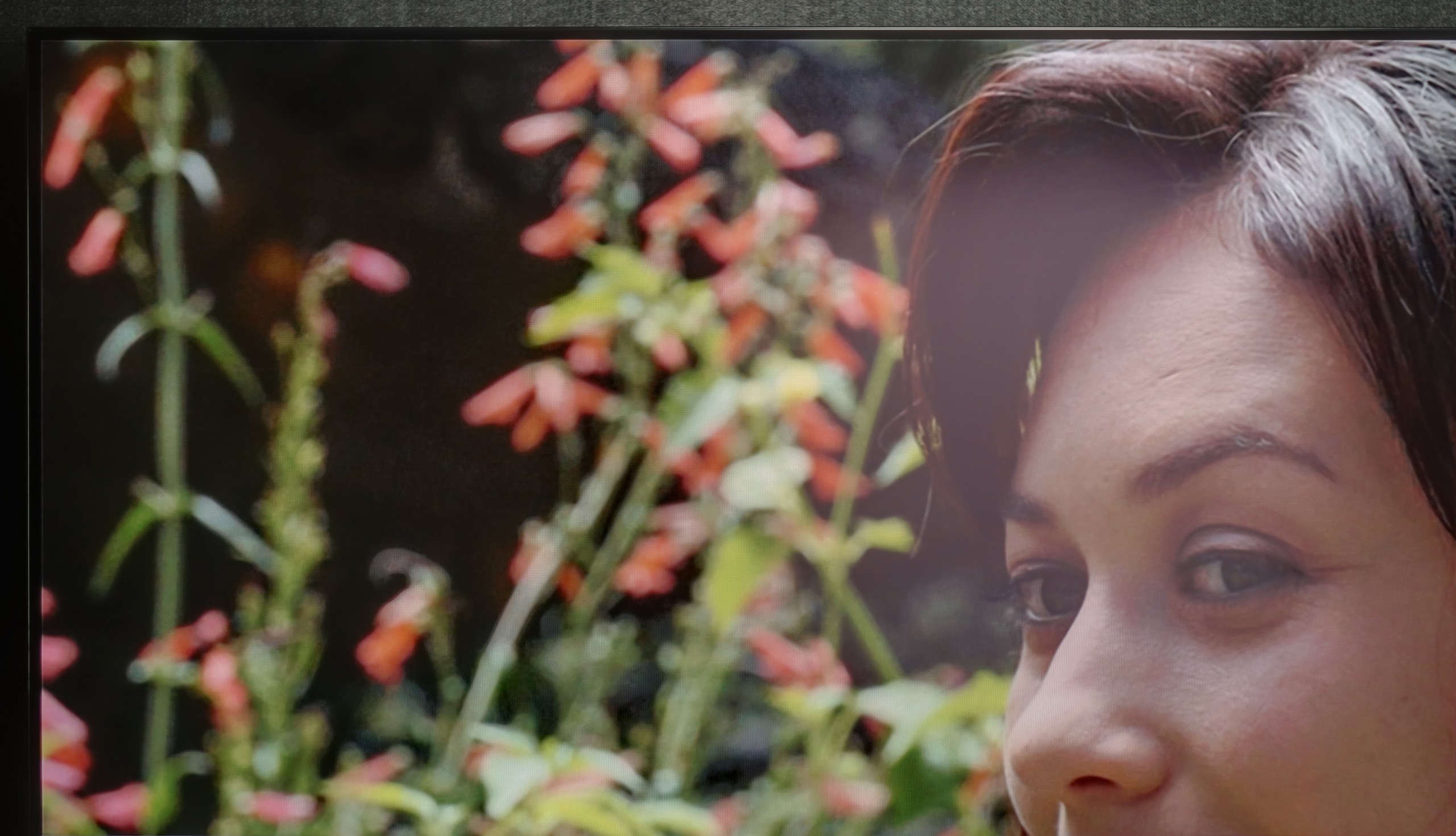

Matrix brightness
Average luminance SDR
Samsung Q7F: 237 cd/m2
SAMSUNG S95F (TANDEM OLED 83"): 704 cd/m2
This is probably the first television in the world where two worlds have come together – the matte finish from Samsung and the WOLED panel from LG Display. And it's fair to say that such a duo makes a stunning impression. Light reflections virtually disappear, and the image does not lose its naturalness – colours remain saturated, and black does not lighten as it does in QD-OLED. It sounds almost like an industry joke, but it turns out that the combination of technologies from two rivals has produced a result better than anyone could have expected. Moreover, the panel's brightness, hovering around 700 nits, means that the television performs excellently even in difficult daytime conditions.
The performance of the Q7F during the day unfortunately does not impress. Due to its low brightness, the screen quickly capitulates in very sunny rooms. It is therefore hard to recommend it to those who plan to watch television in a bright living room with large windows. In moderately lit rooms, it still performs adequately, but in bright light, the picture loses clarity. Additionally, the fact that the panel does not always effectively handle glare means reflections can be distracting during the day. This is more of a screen for evening viewing rather than for daily sessions in full sunlight.
Details about the matrix
Subpixel Structure:

Panel uniformity and thermal imaging:
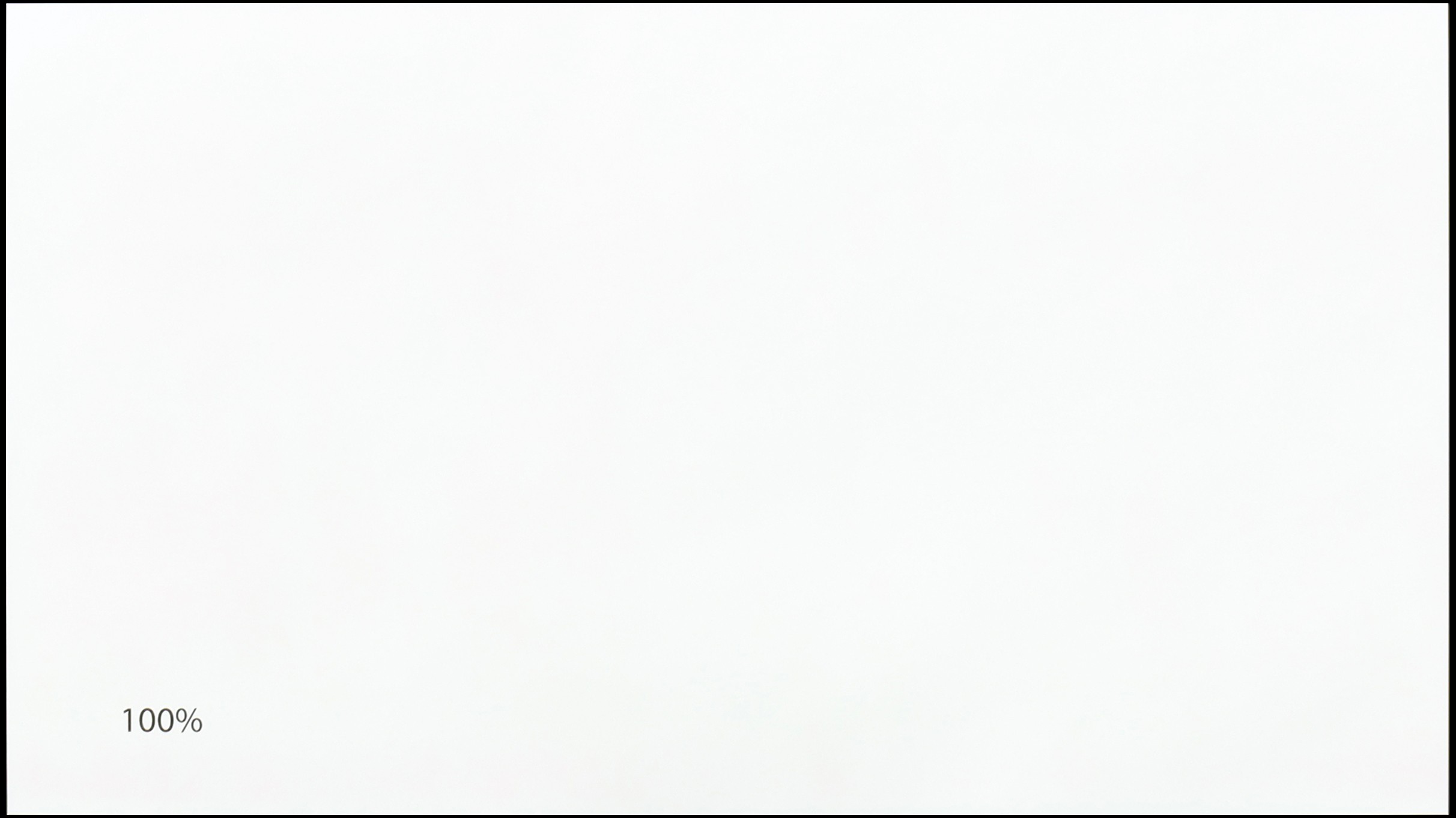

SAMSUNG S95F (TANDEM OLED 83")
Samsung Q7F
TV features
7.9/10
6.6/10
- HDMI inputs0 x HDMI 2.0, 4 x HDMI 2.1 40Gbps3 x HDMI 2.0, 0 x HDMI 2.1
- OutputsToslink (Optical audio), eARC (HDMI), ARC (HDMI)Toslink (Optical audio), eARC (HDMI), ARC (HDMI)
- Network InterfacesWi-Fi 2.4GHz, Wi-Fi 5GHz, Ethernet (LAN) 100MbpsWi-Fi 2.4GHz, Wi-Fi 5GHz, Ethernet (LAN) 100Mbps
- TV receptionDVB-T, DVB-T2, DVB-S, DVB-S2, DVB-CDVB-T, DVB-T2, DVB-S, DVB-S2, DVB-C
Classic features:
- Recording to USB (terrestrial TV)
- Recording programming
- Picture in Picture (PiP)
- RF remote control (no need to aim at the screen)
- Backlit remote control
- Teletext
- Audio only mode
- Bluetooth headphones support
- Simultaneous Bluetooth headphones & TV audio
Smart features:
- AirPlay
- Screen mirroring (Windows Miracast)
- Voice search
- Voice search in native language
- Ability to connect a keyboard and mouse
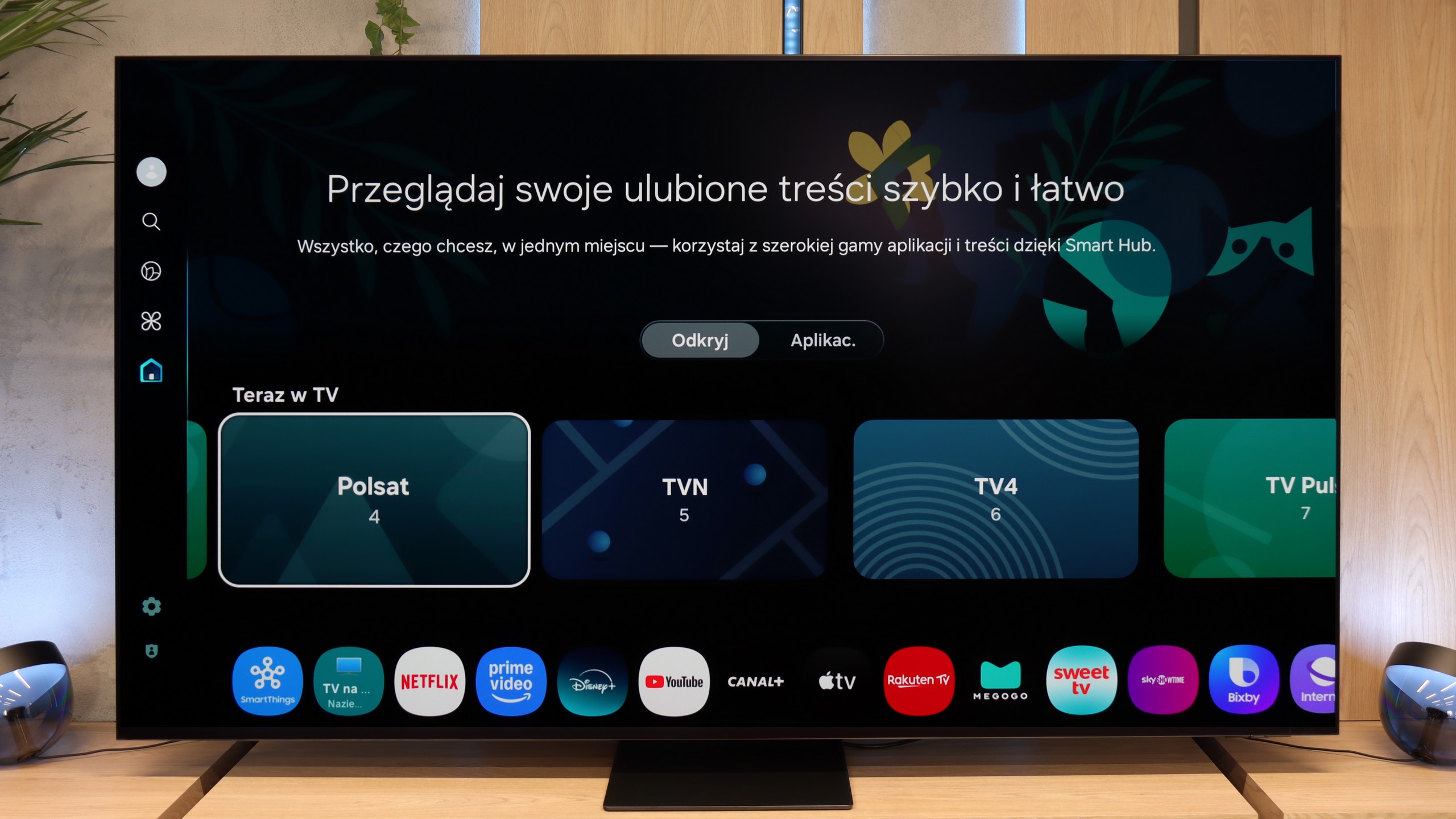
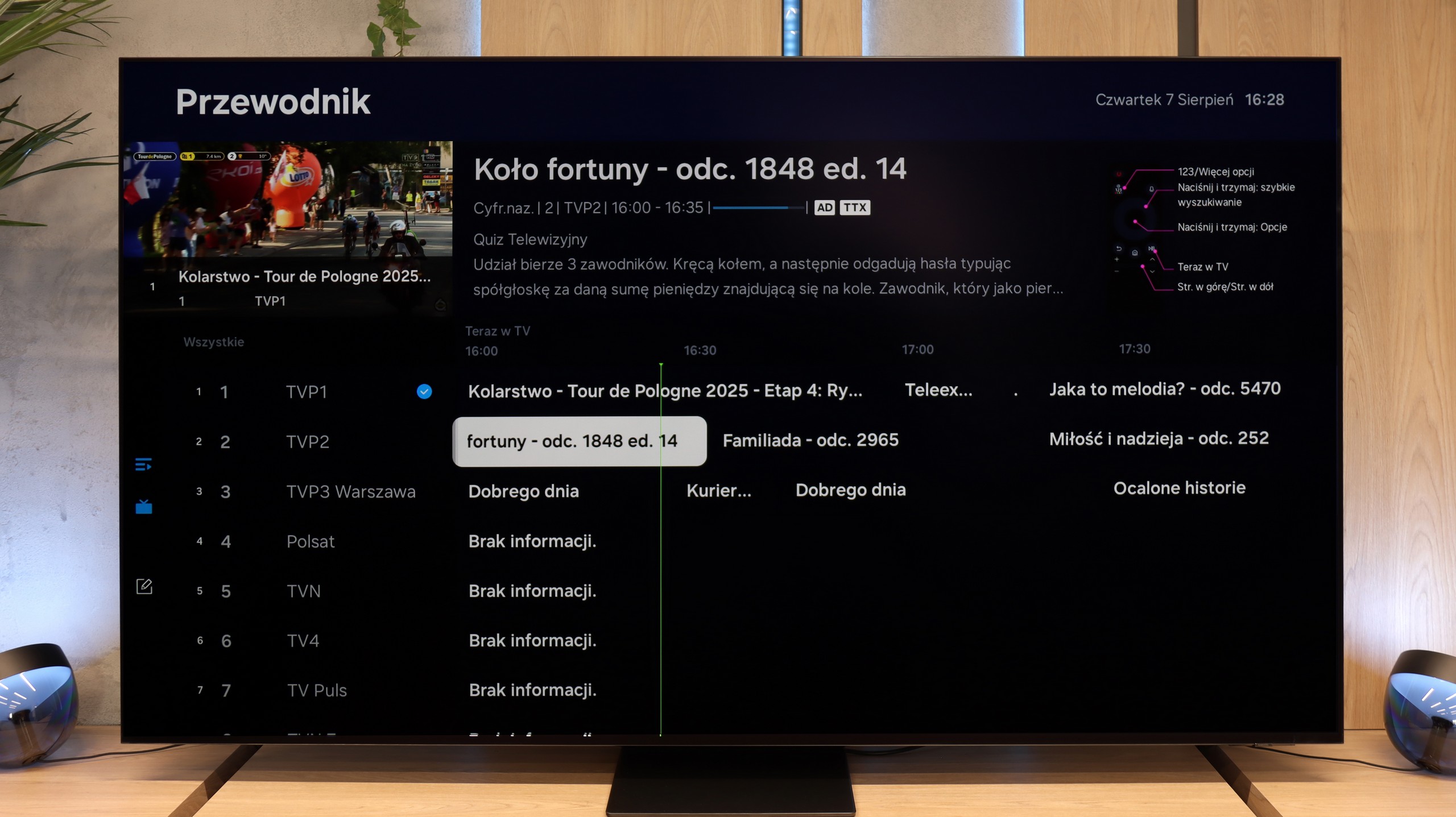
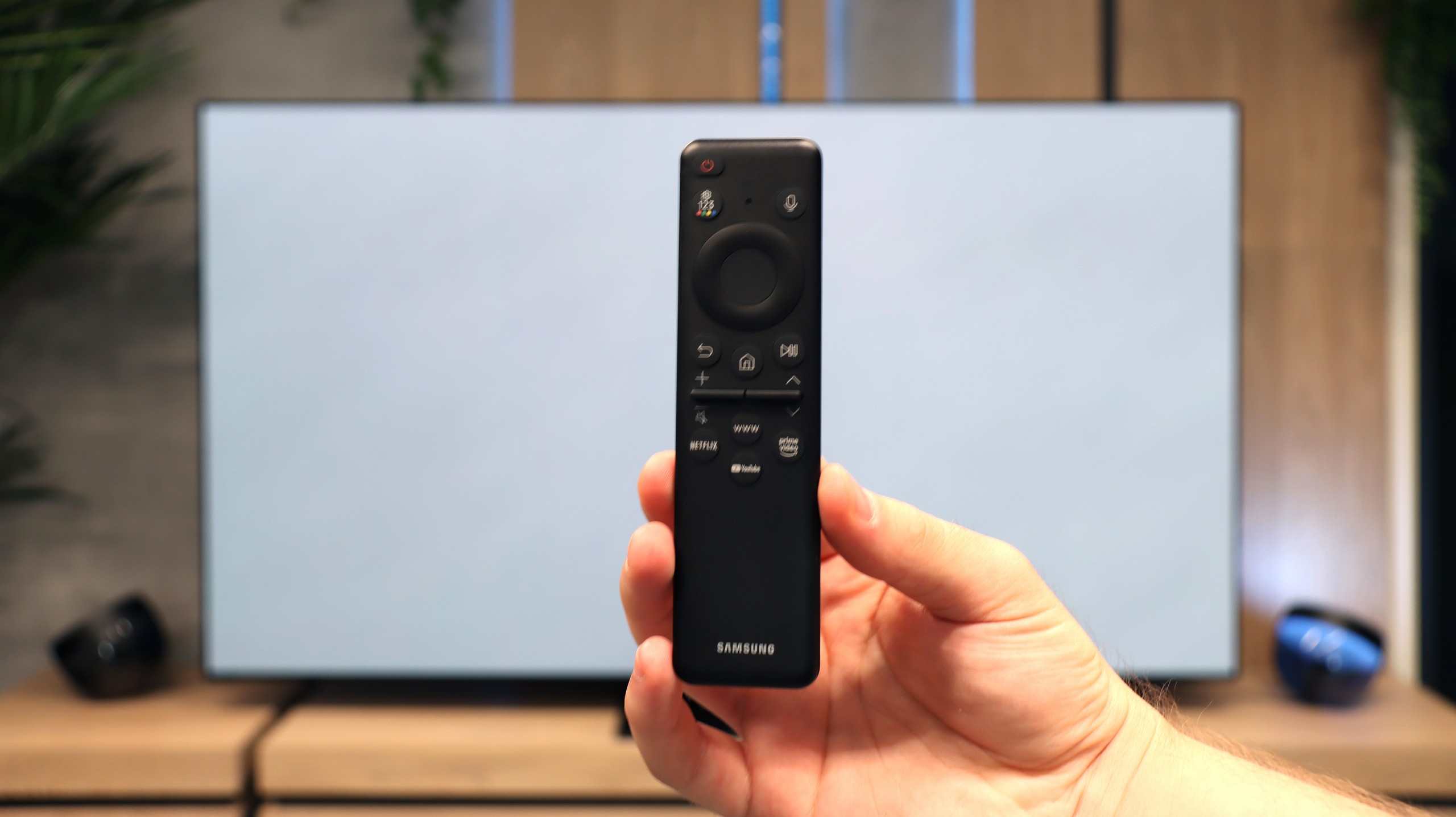
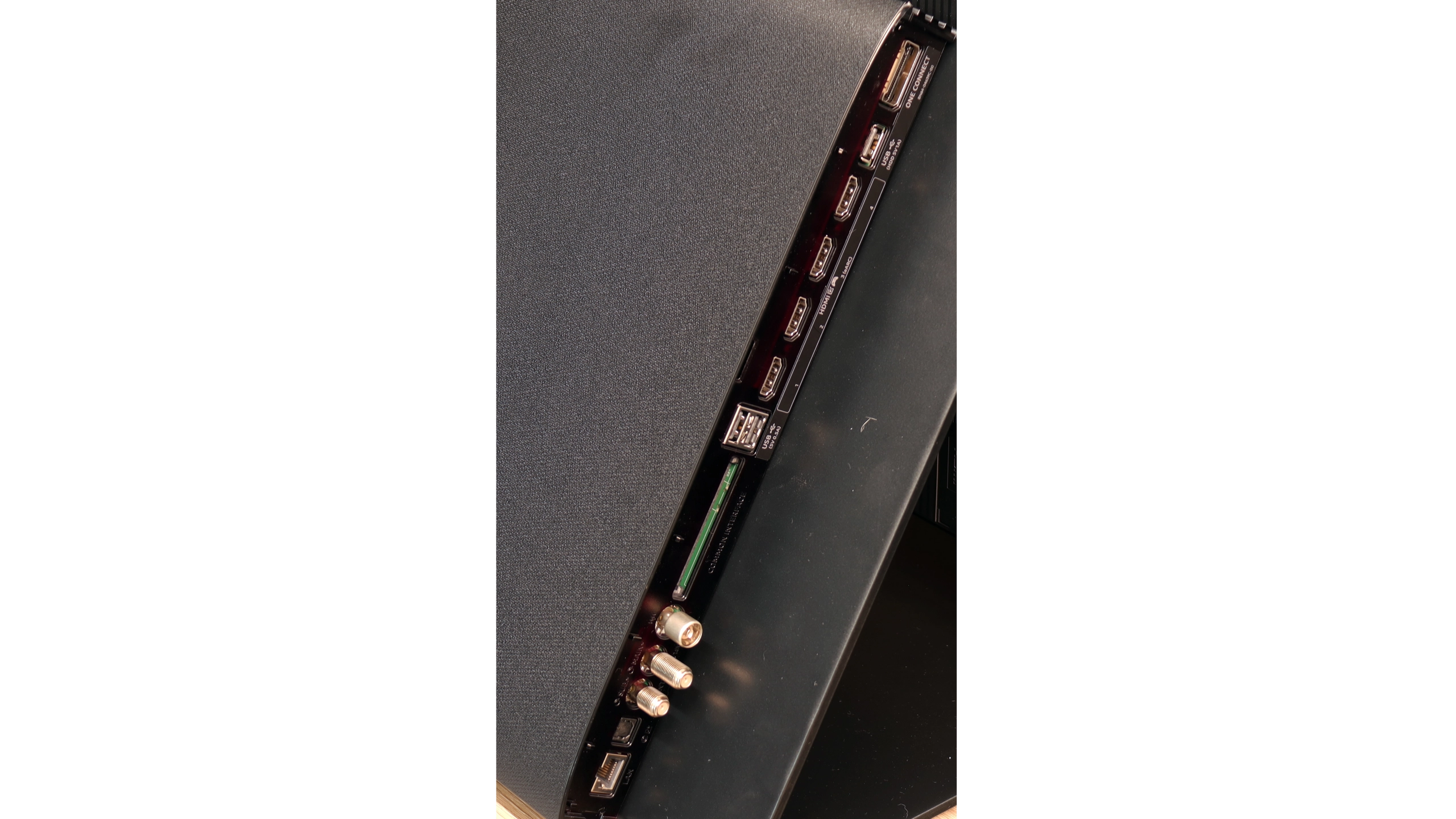




SmartTV in S95F: Tizen
Samsung S95F is not just a screen for films and games, but also a well-developed smart platform. The Tizen system runs quickly and smoothly – it is hard to encounter stutter or major issues here. In everyday use, we have everything we need: AirPlay, screen sharing from smartphones, and voice search (which works even without the remote in hand). It is a closed system, so we won't find every app available on Android, but the library is rich enough that no one is likely to feel deprived. Additionally, there is SmartThings, which integrates with smart home devices, allowing the TV to be more than just a display.
Classic features of the S95F
A pleasant surprise is the presence of features that are often omitted in this class of equipment – PiP, teletext, and the ability to connect headphones via Bluetooth. The only thing missing is USB recording from the built-in DVB-T/T2 tuners, but Samsung makes up for this with an excellent remote (tiny), which can easily control other devices, including the Canal+ decoder. The One Connect module also deserves praise – having all the inputs hidden in a separate box is a huge convenience, especially for those who frequently juggle connected devices. Thus, it is difficult to point out any element that could provoke complaints here.
Smart TV – Tizen System
Here Q7F shows its strongest side. Samsung has been developing the Tizen system for years, and it is evident that we are dealing with a mature, well-refined platform. Everything runs smoothly, the menu does not lag even when switching between heavier applications, and installing additional programmes from the library is quick and hassle-free. In addition, there is full support for AirPlay, integration with voice assistants, as well as a wide range of add-ons – from cooperation with devices in the SmartThings ecosystem to the ability to control Philips Hue smart lighting or other smart gadgets. Samsung strongly focuses on advanced networking features, and this is evident – in terms of Smart TV, the Q7F has absolutely nothing to be ashamed of, and on the contrary, it can embarrass more expensive competitors.
Classic Features
On the side of classic, “television” solutions, it is clear that the manufacturer has bet everything on the smart card. We will not find any USB recording or PiP mode here, which used to be standard features. It is evident that the Q7F is meant to be primarily a multimedia centre, rather than a device for those accustomed to more traditional solutions. Fortunately, several practical additions are not lacking – we have Bluetooth for pairing headphones or speakers, and the option to change the font size in the menu, which will be appreciated by users with weaker eyesight.
Playing files from USB
9/10
9/10
Supported photo formats:
Maximum photo resolution:
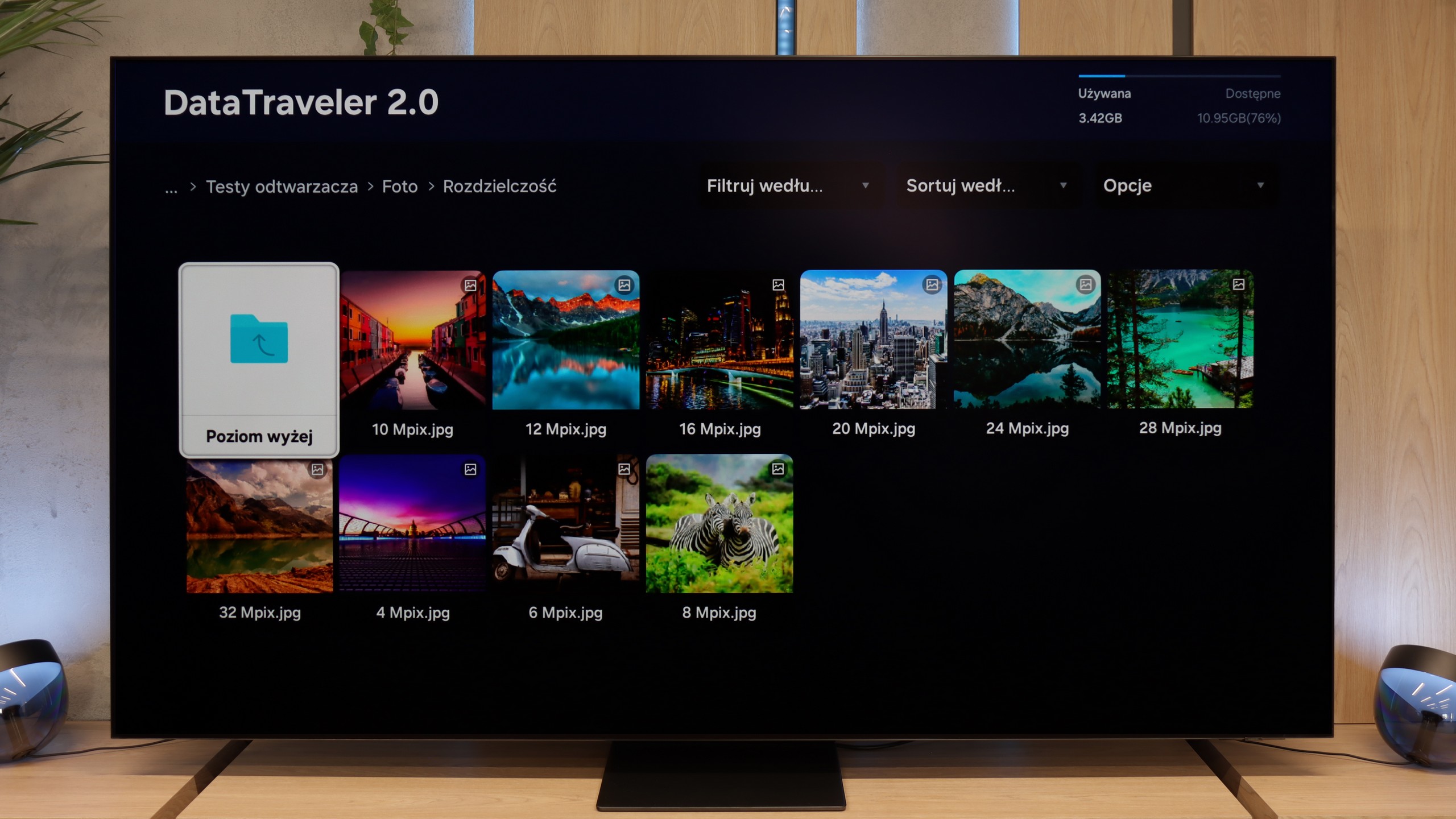

The built-in media player in the S95F works quite well, although it is not without its limitations. It handles most popular video and audio formats, but there may be some concerns with photos. The manufacturer's claims do not always align with reality – for example, HEIC files would not open. On the other hand, for most users, such a set of features will be perfectly sufficient; however, if someone needed something more advanced, they could always look for an alternative in the Tizen catalogue (if they can find one) or use wireless connectivity 😉.
In the Q7F we have a built-in file player, and as is usually the case with Samsung televisions, it works quite well – most popular films or music will play without fuss. For basic use, it is sufficient, and there is no real need to reach for external solutions like connecting a laptop. It is worse if someone wants to upload photos – here it can lag, especially with Apple's HEIC or PNG, which are visible in the player menu but do not necessarily want to work.
Apps
8.7/10
8.7/10














































Sound
8/10
5.8/10
- Maximum volume82dB80dB
- Dolby Digital Plus 7.1
- Dolby True HD 7.1
- Dolby Atmos in Dolby Digital Plus (JOC)
- Dolby Atmos in Dolby True HD
- DTS:X in DTS-HD MA
- DTS-HD Master Audio
The built-in speakers of the S95F can be pleasantly surprising – they sound enjoyable and clear, and despite the slim construction of the television, it is hard to say that the sound is flat. Admittedly, there could be more bass, but this is a natural compromise with such a thin casing. For everyday watching of films or series, the set performs excellently. Those who enjoy stronger sensations should consider a soundbar – preferably one with Q-Symphony support. Then the television speakers and the Samsung soundbar work together.
The Samsung Q7F comes with a 20 W speaker system and… well, let’s not kid ourselves, it’s nothing revolutionary. The television itself sounds quite decent, meaning we can clearly hear series, news, or daily programmes; dialogues do not get lost, but there’s a significant lack of depth and sound space. There is virtually no bass; it thuds somewhat, but it resembles more of a box being tapped rather than true low tones. Music comes across flat, and films don't make any significant impression – we won’t feel like we're in a cinema. It’s sound from the ‘acceptable’ category, just enough to have something built-in, but if someone is counting on a stronger experience, they will inevitably reach for a soundbar sooner or later. And to be honest – even the simplest model will make a considerable difference, and Samsung has quite a few in their offering.
Acoustic Measurements
82dBC (Max)
75dBC
80dBC (Max)
75dBC


